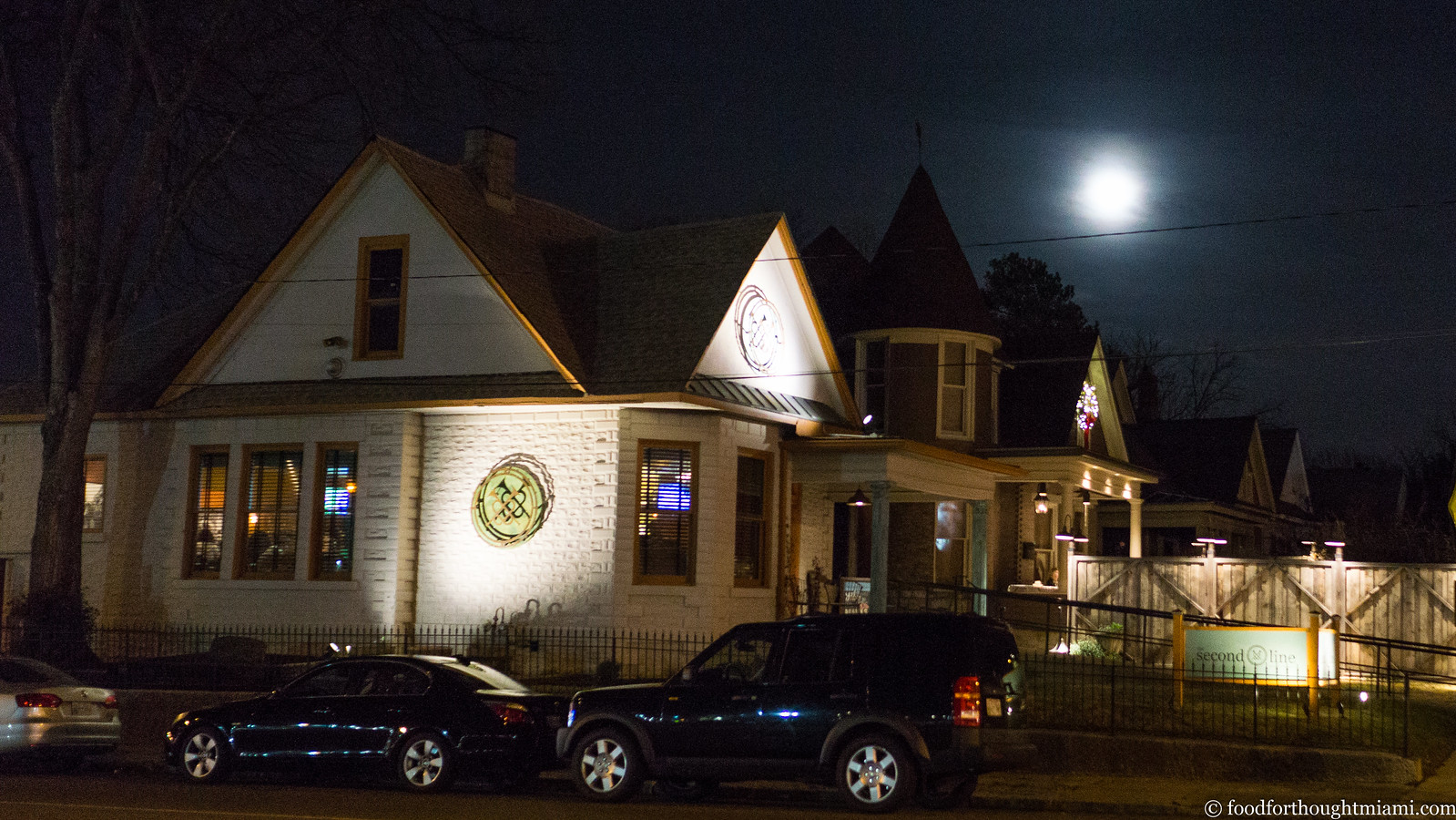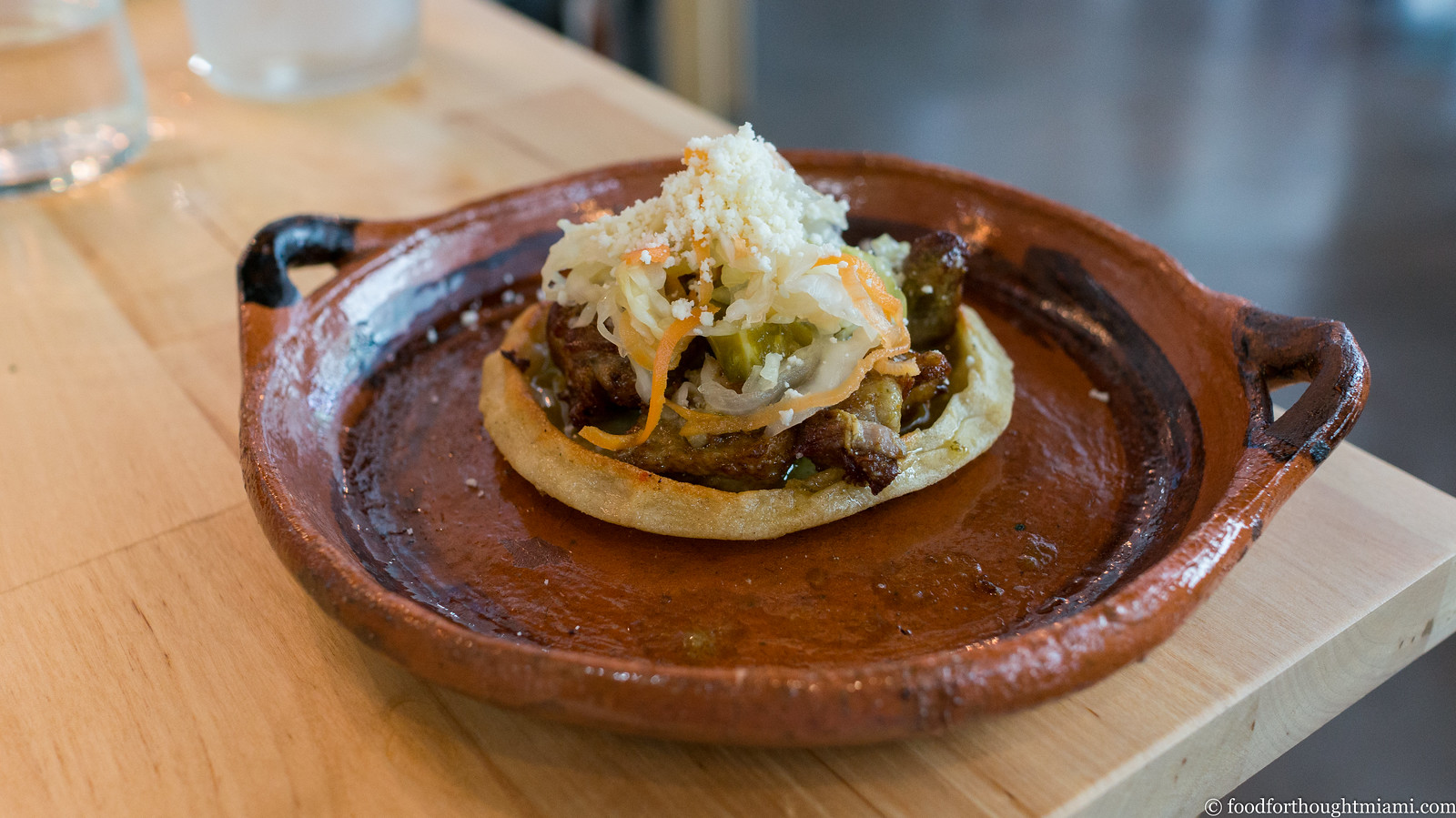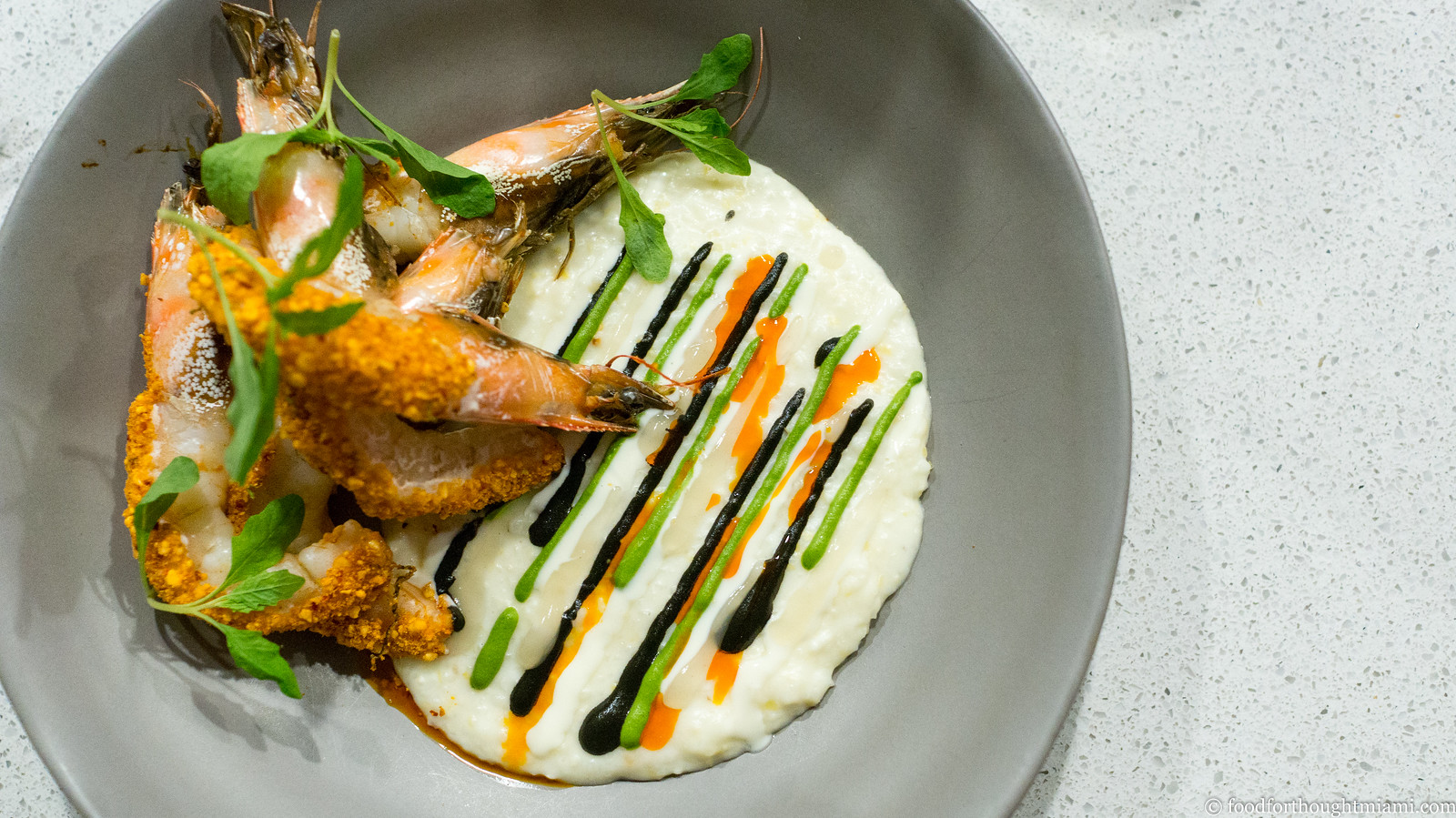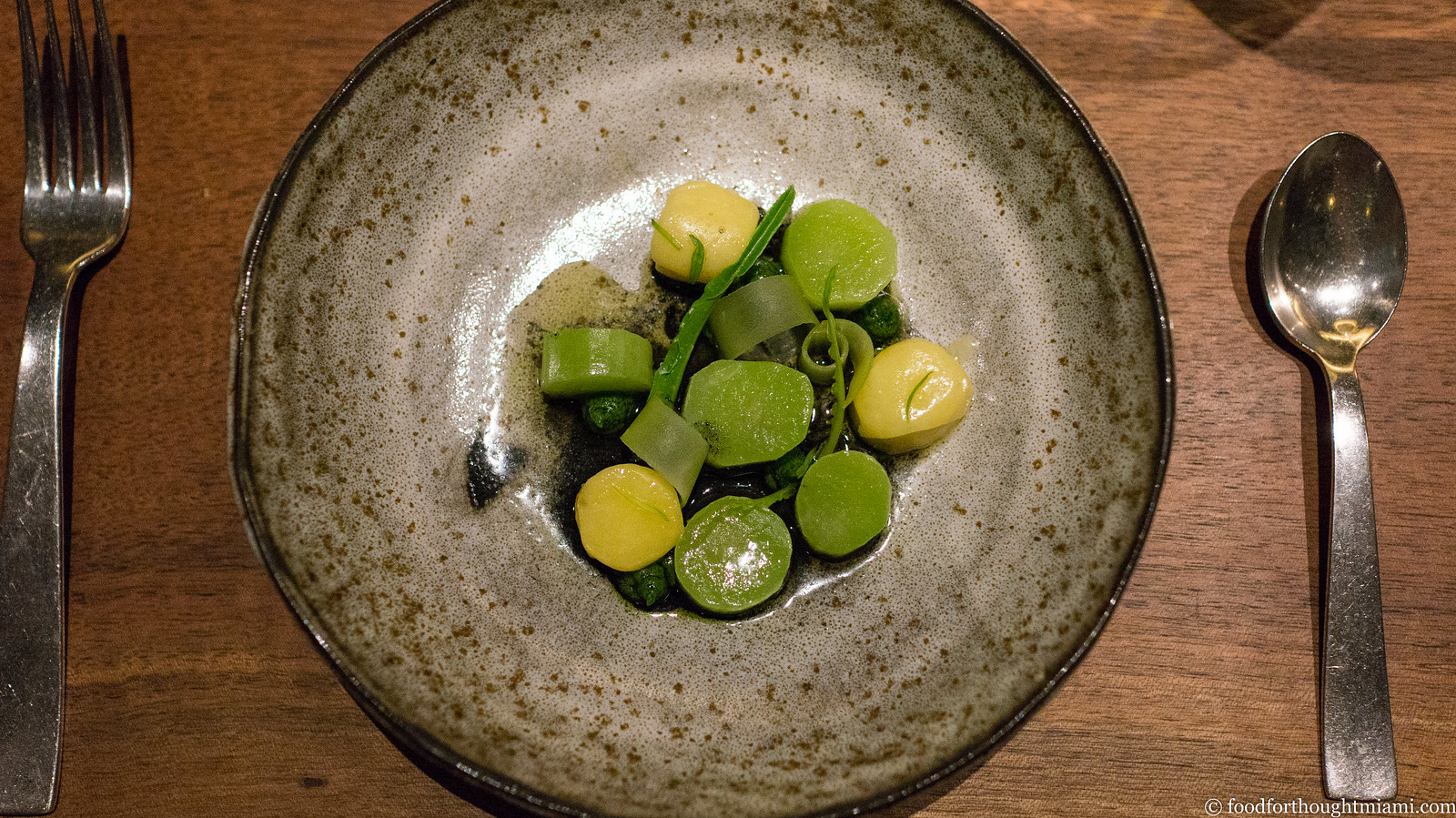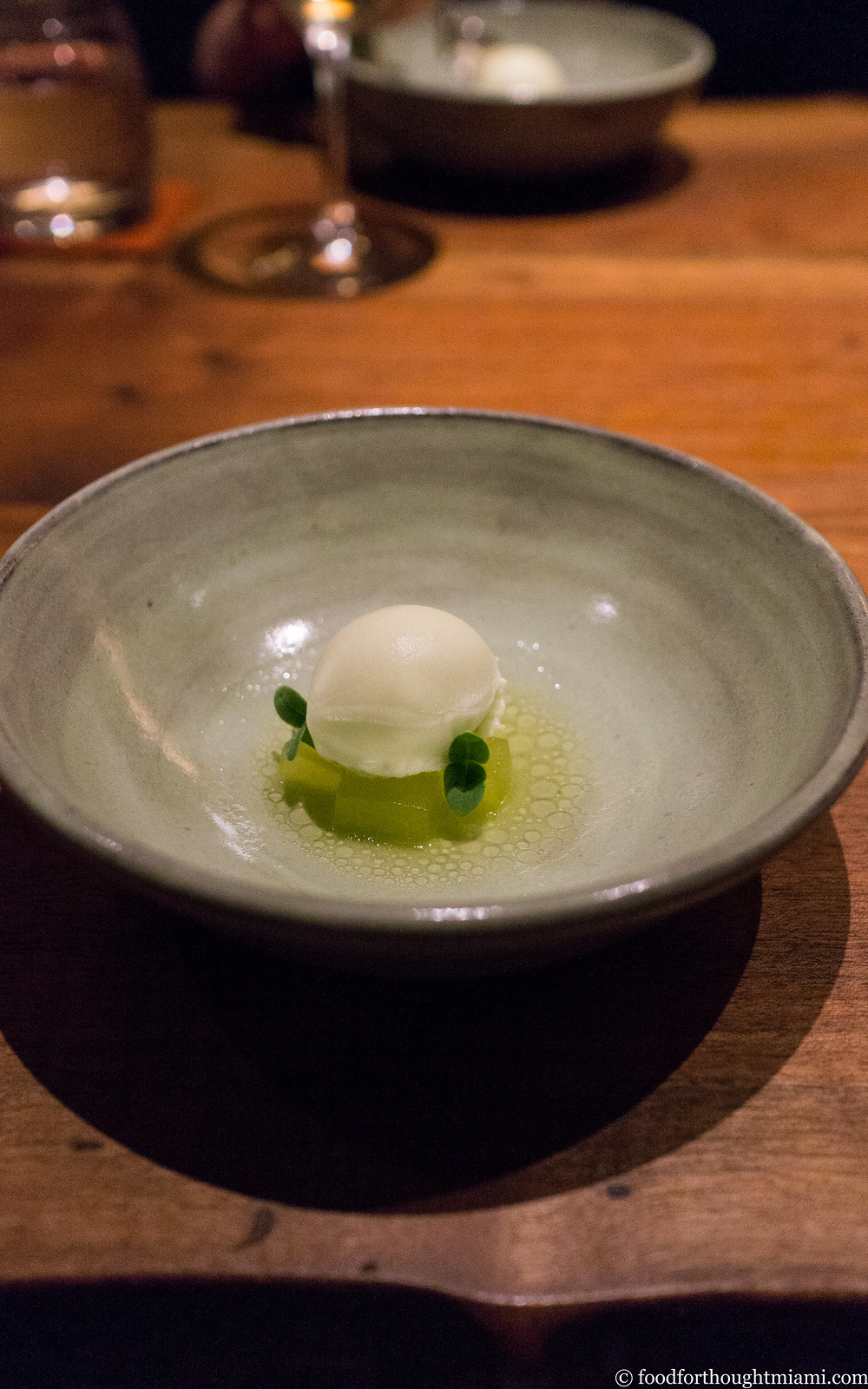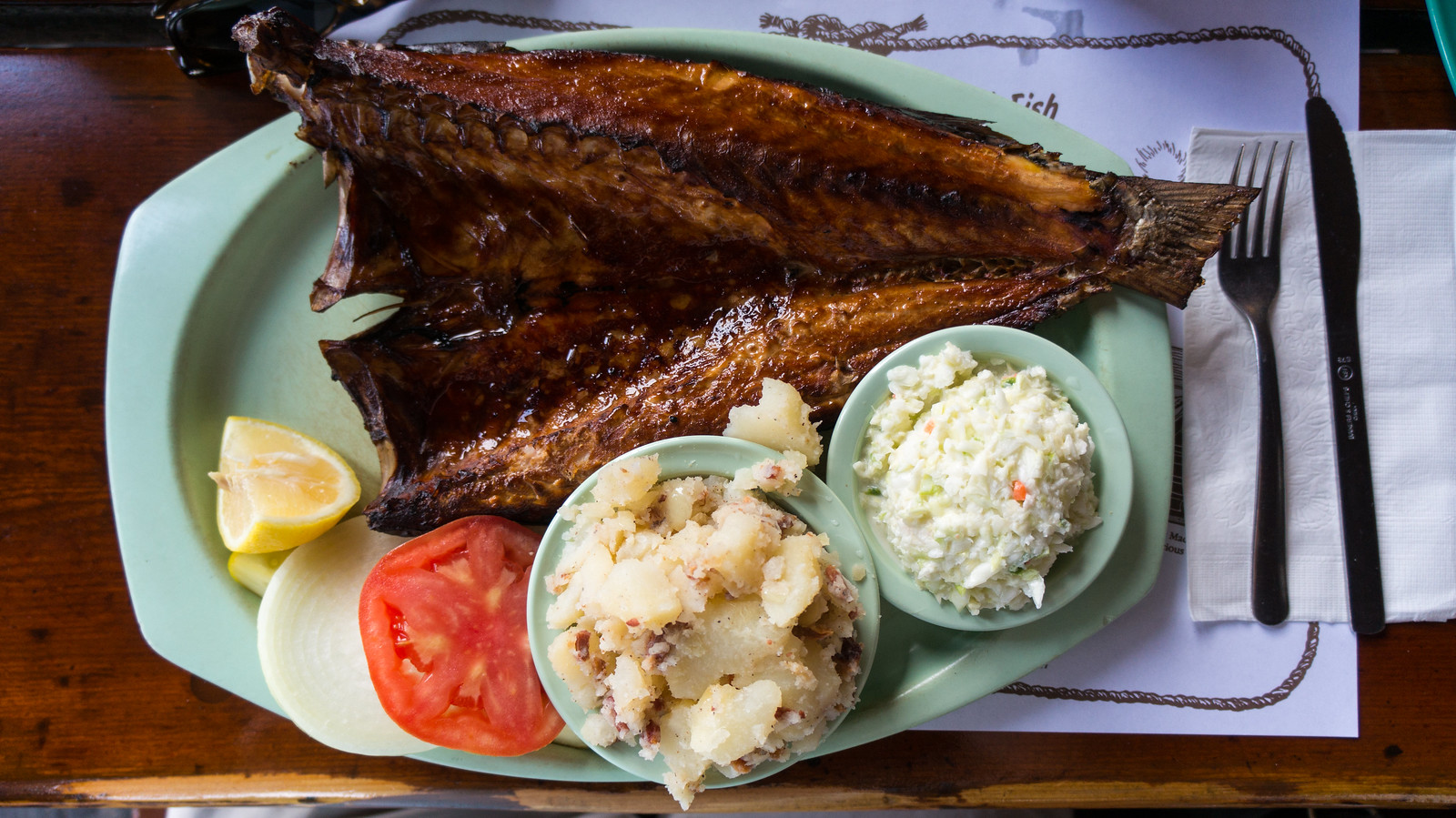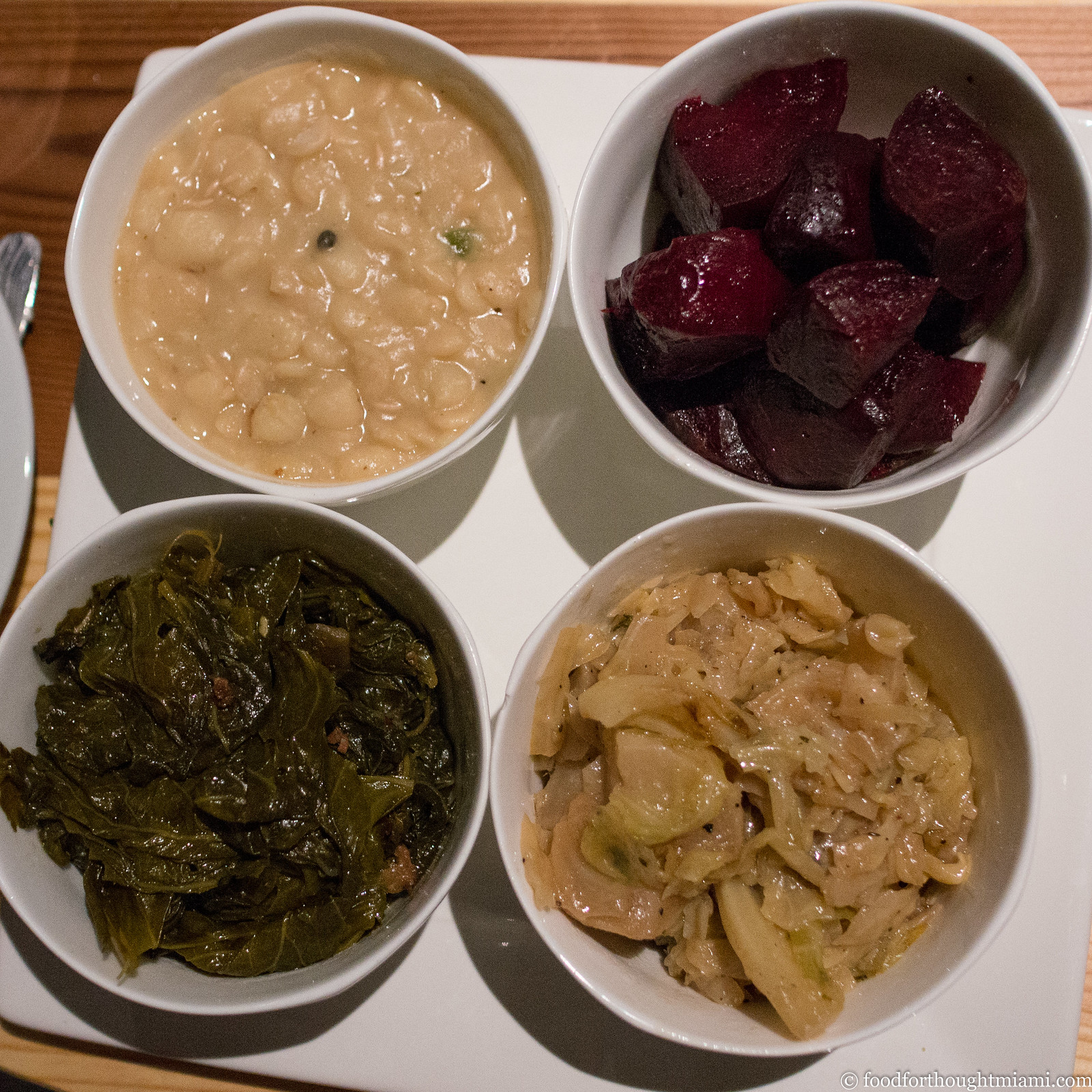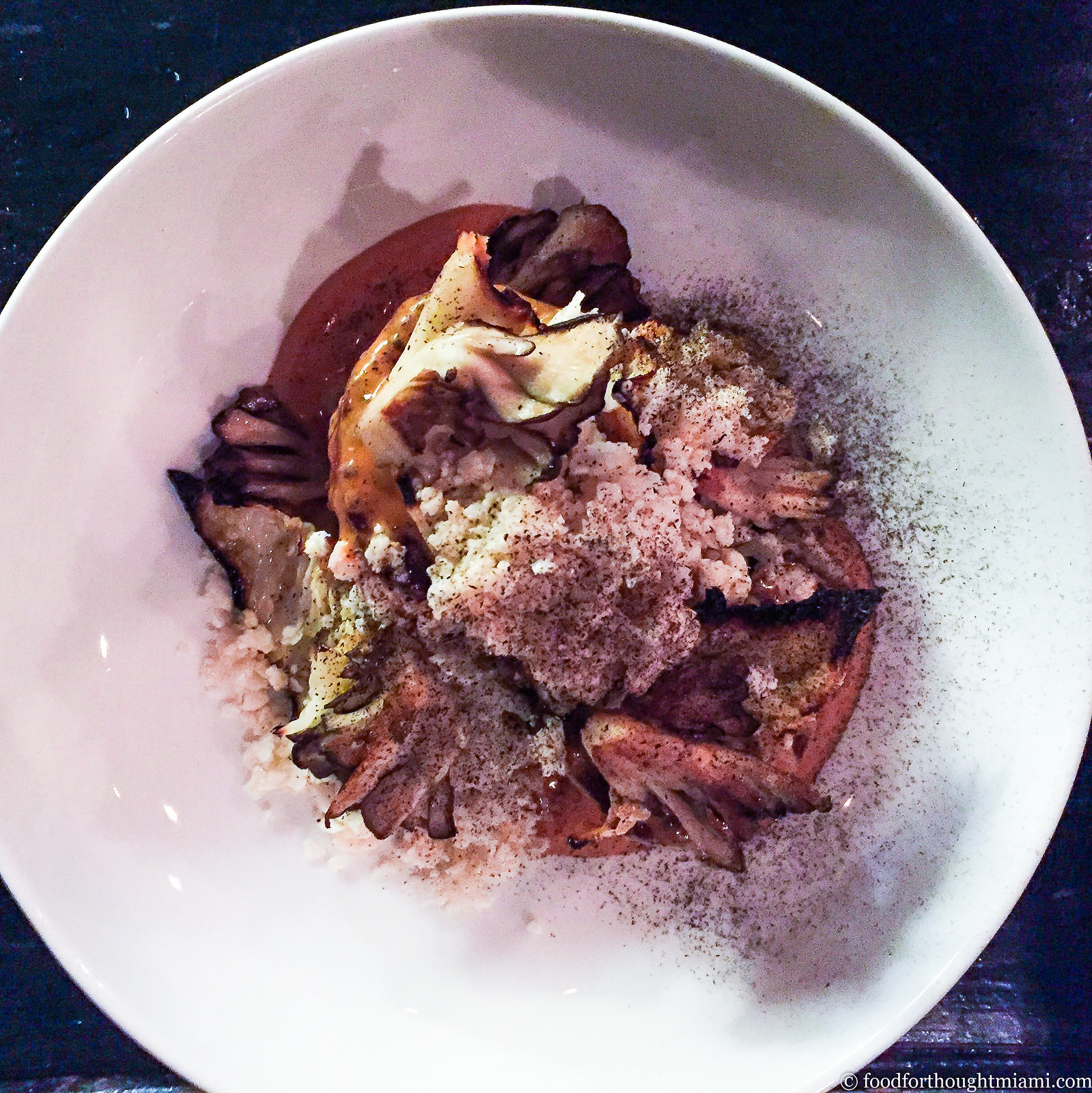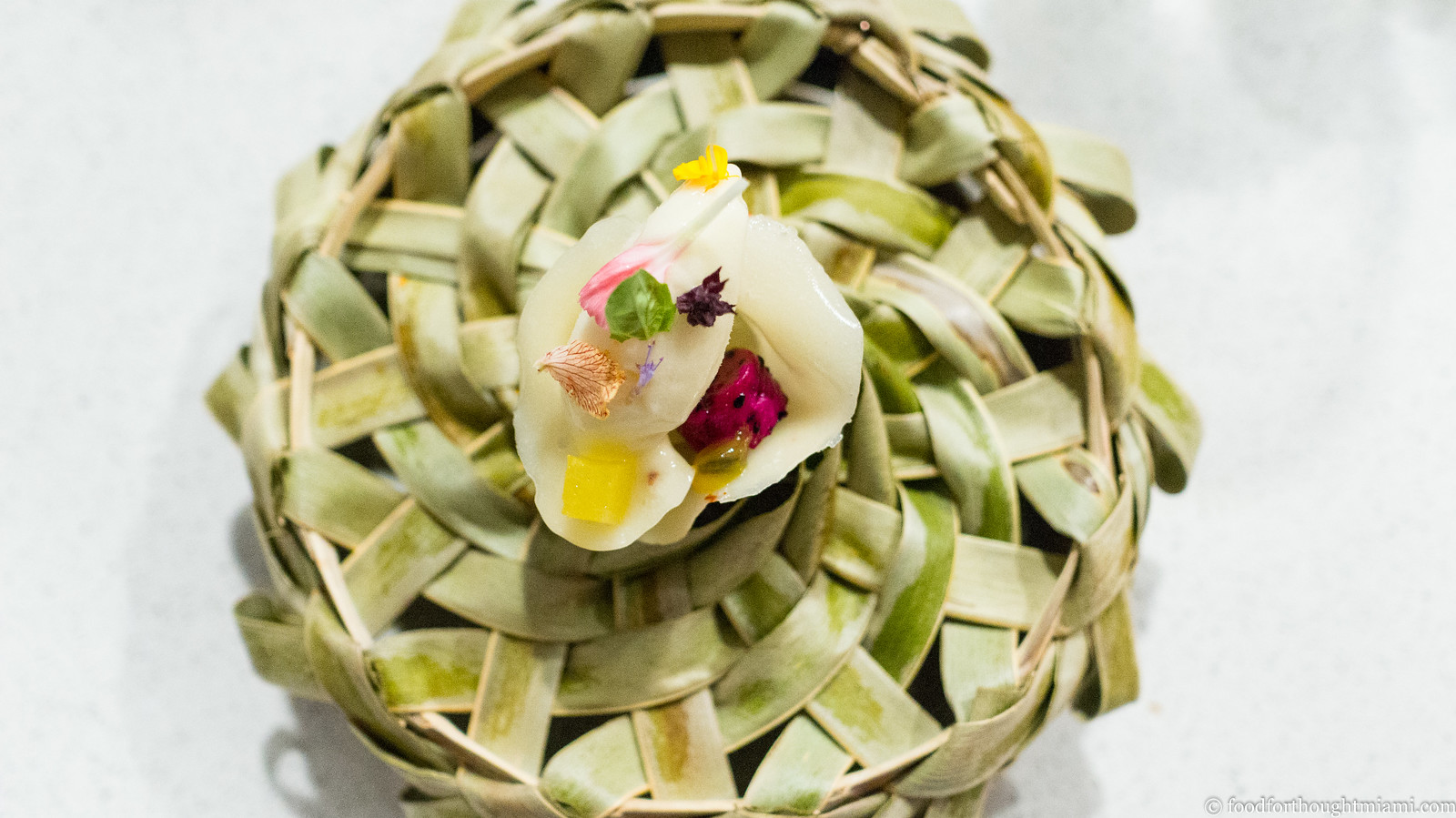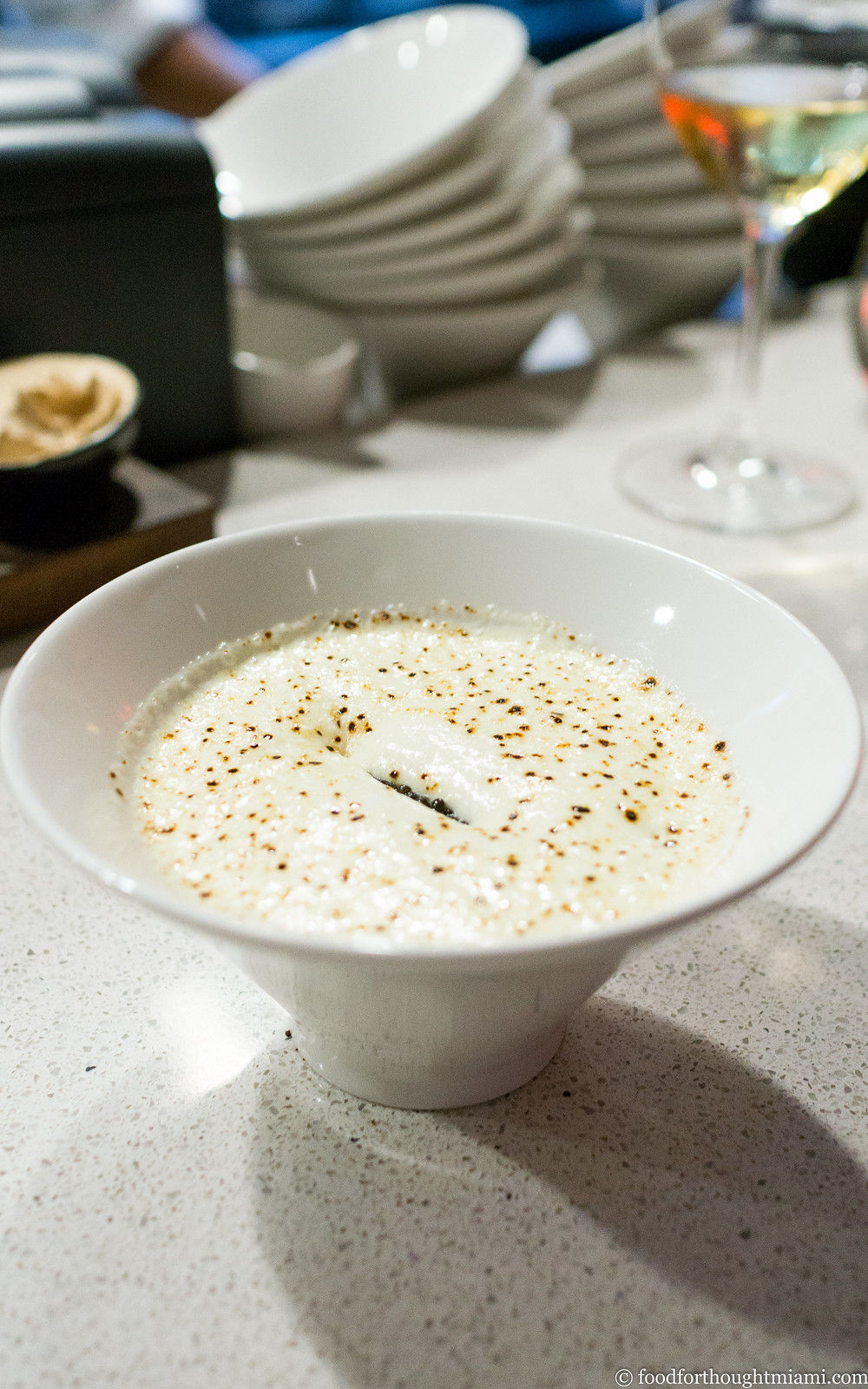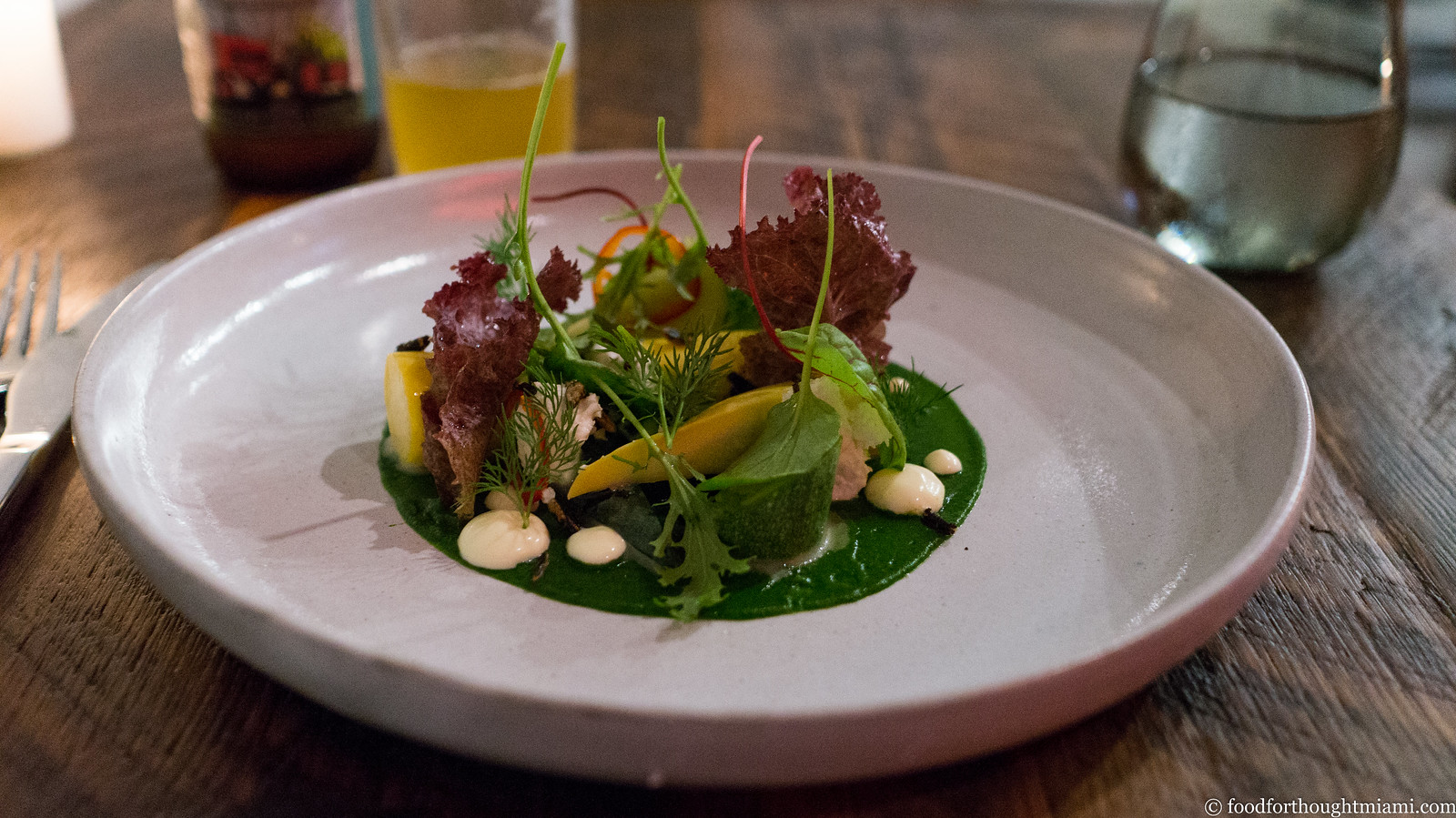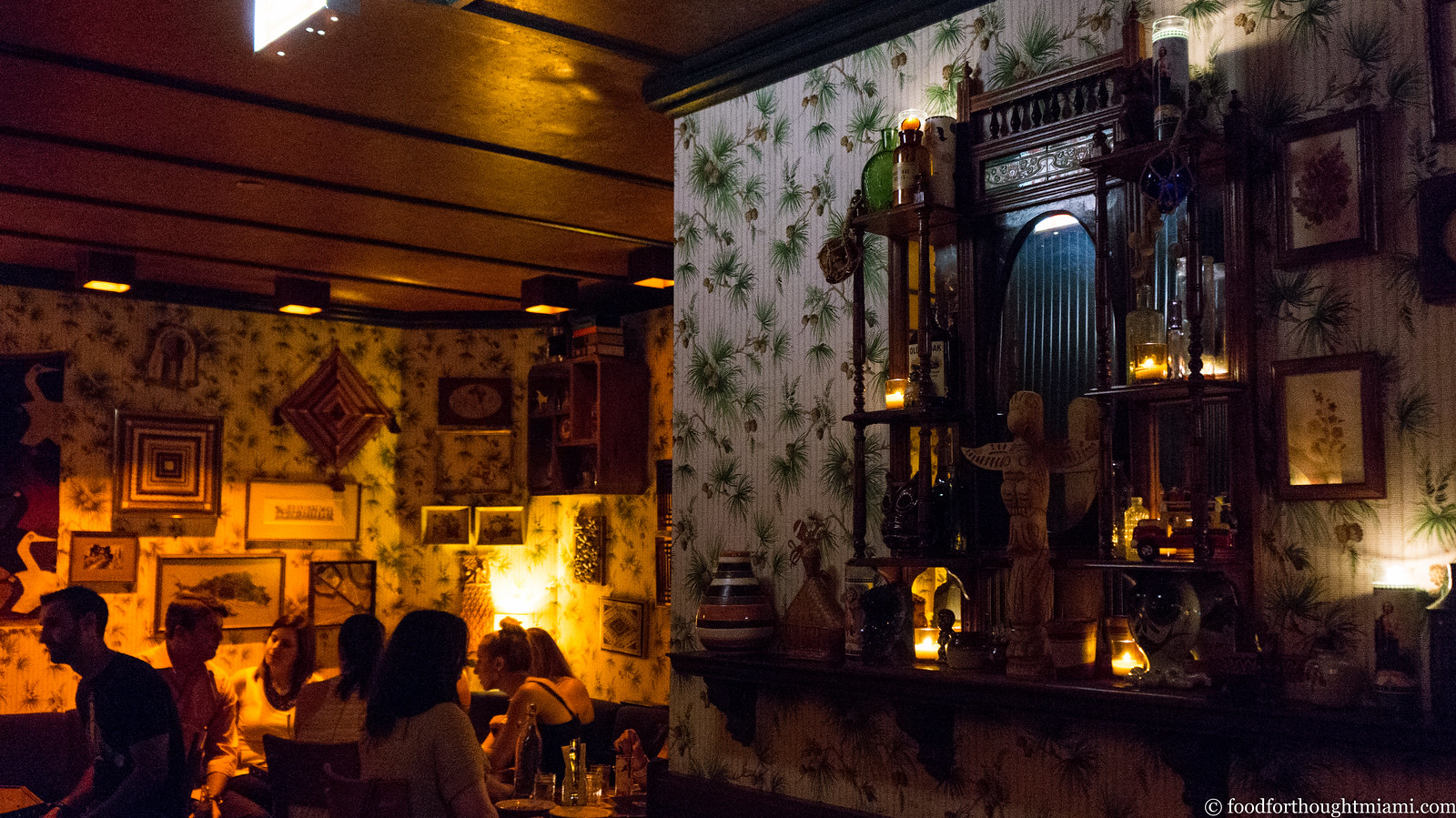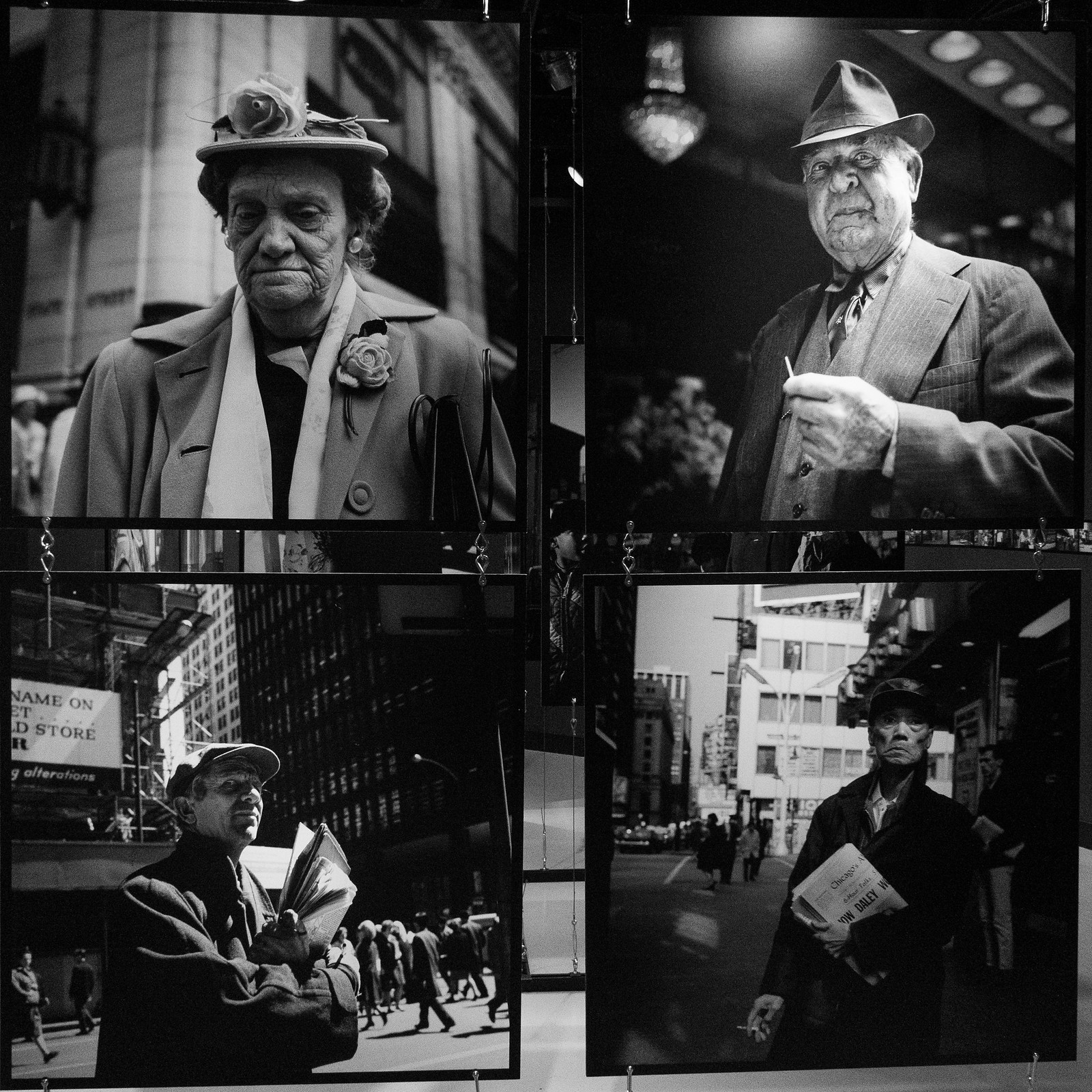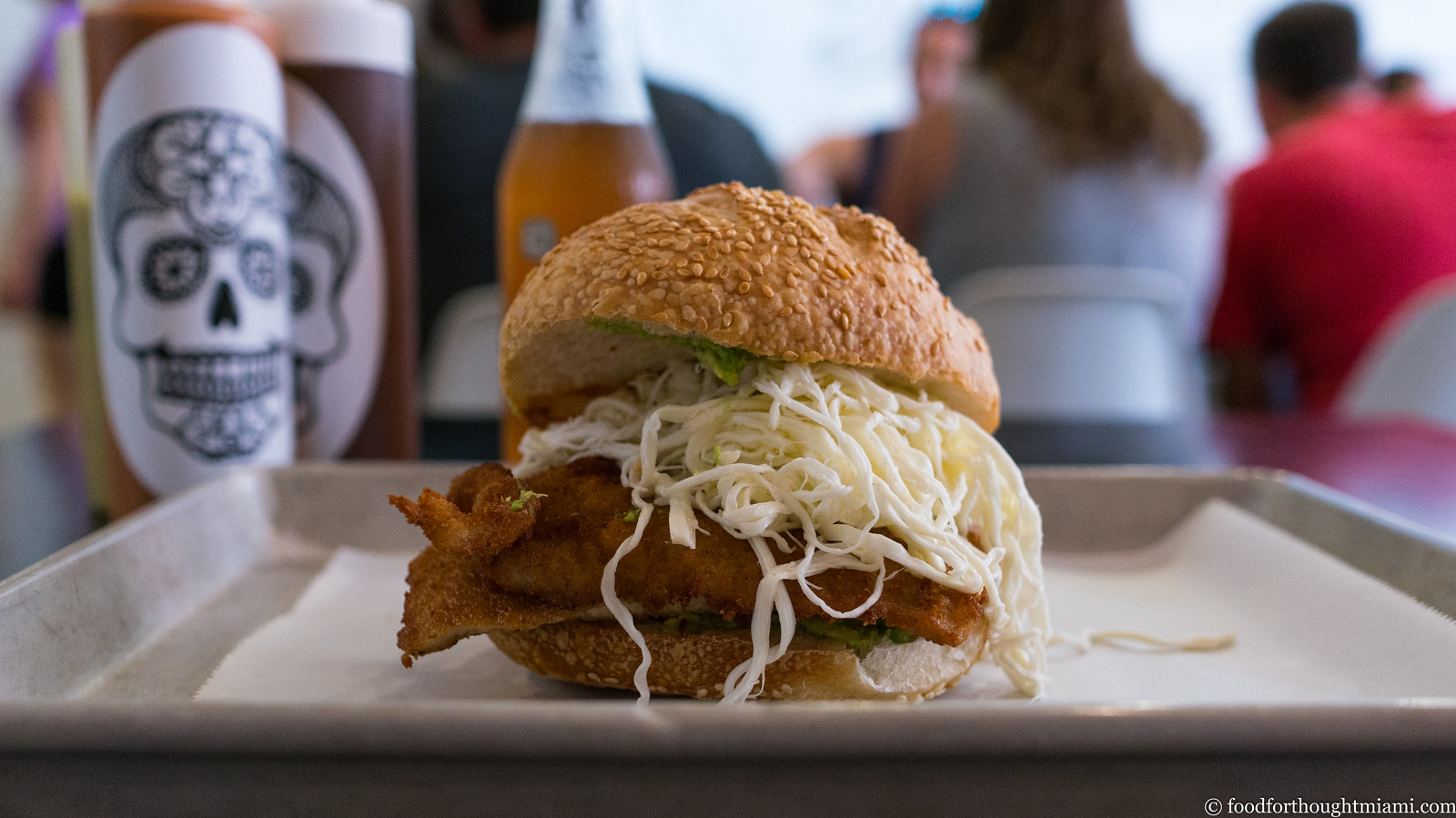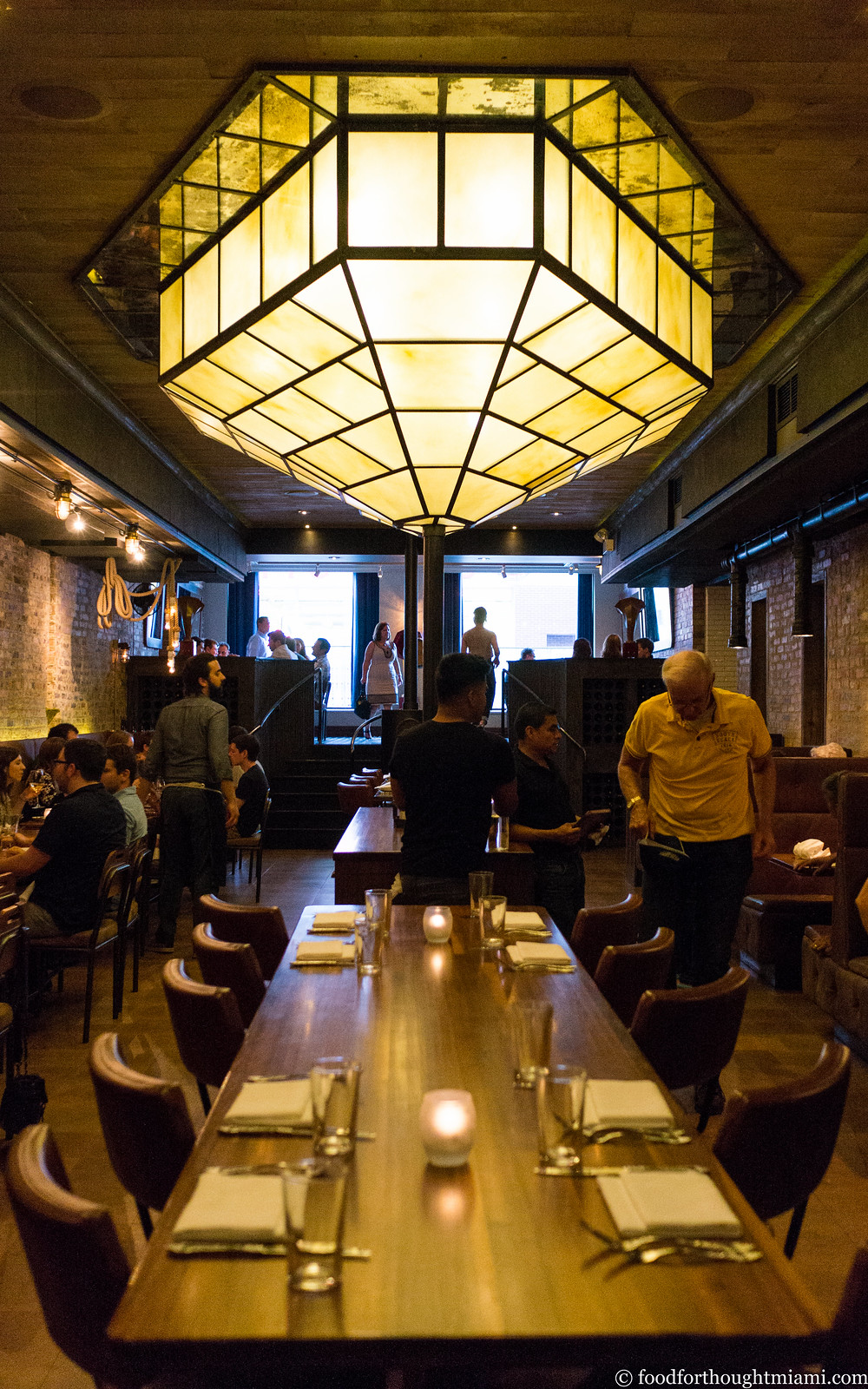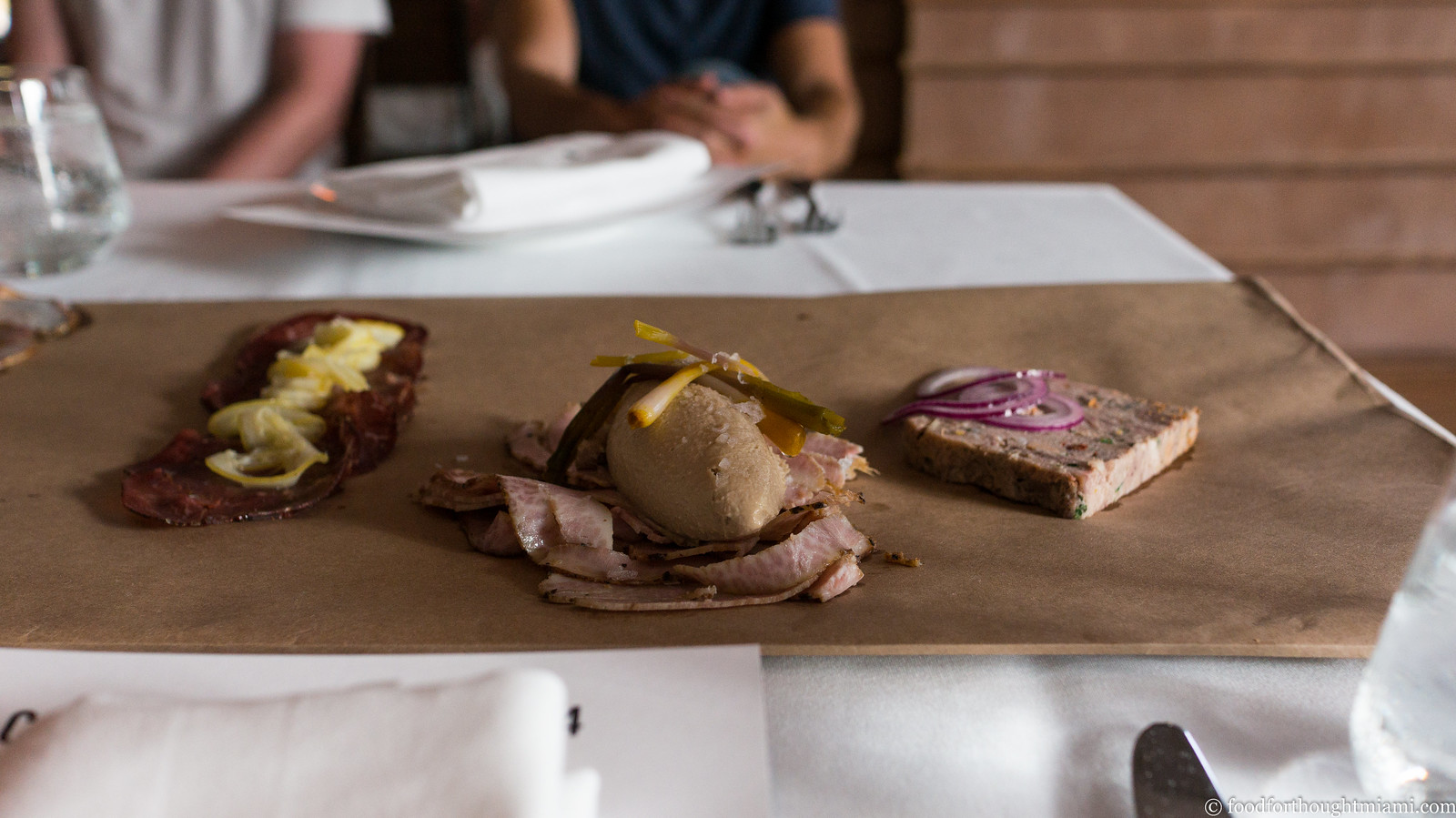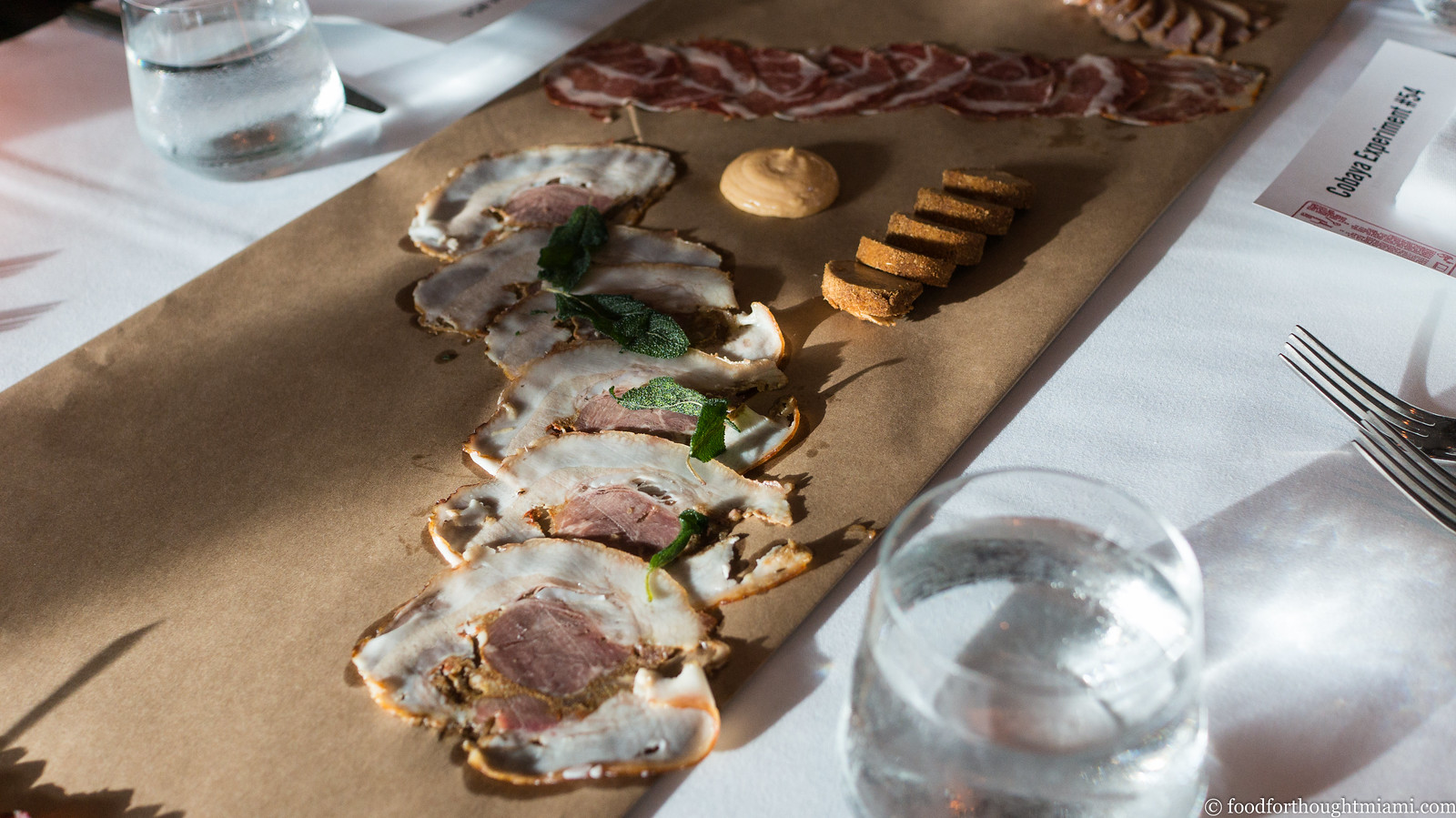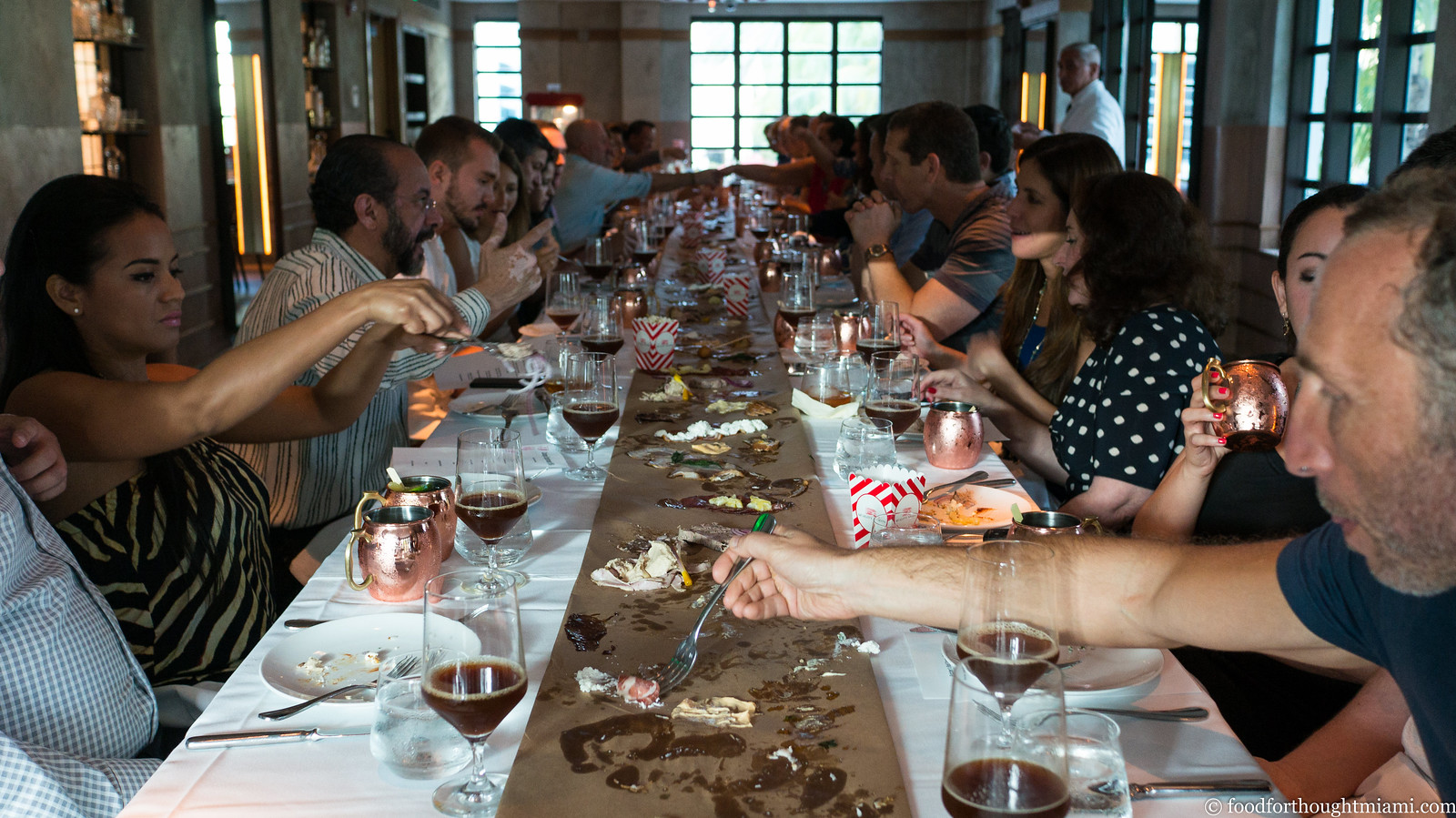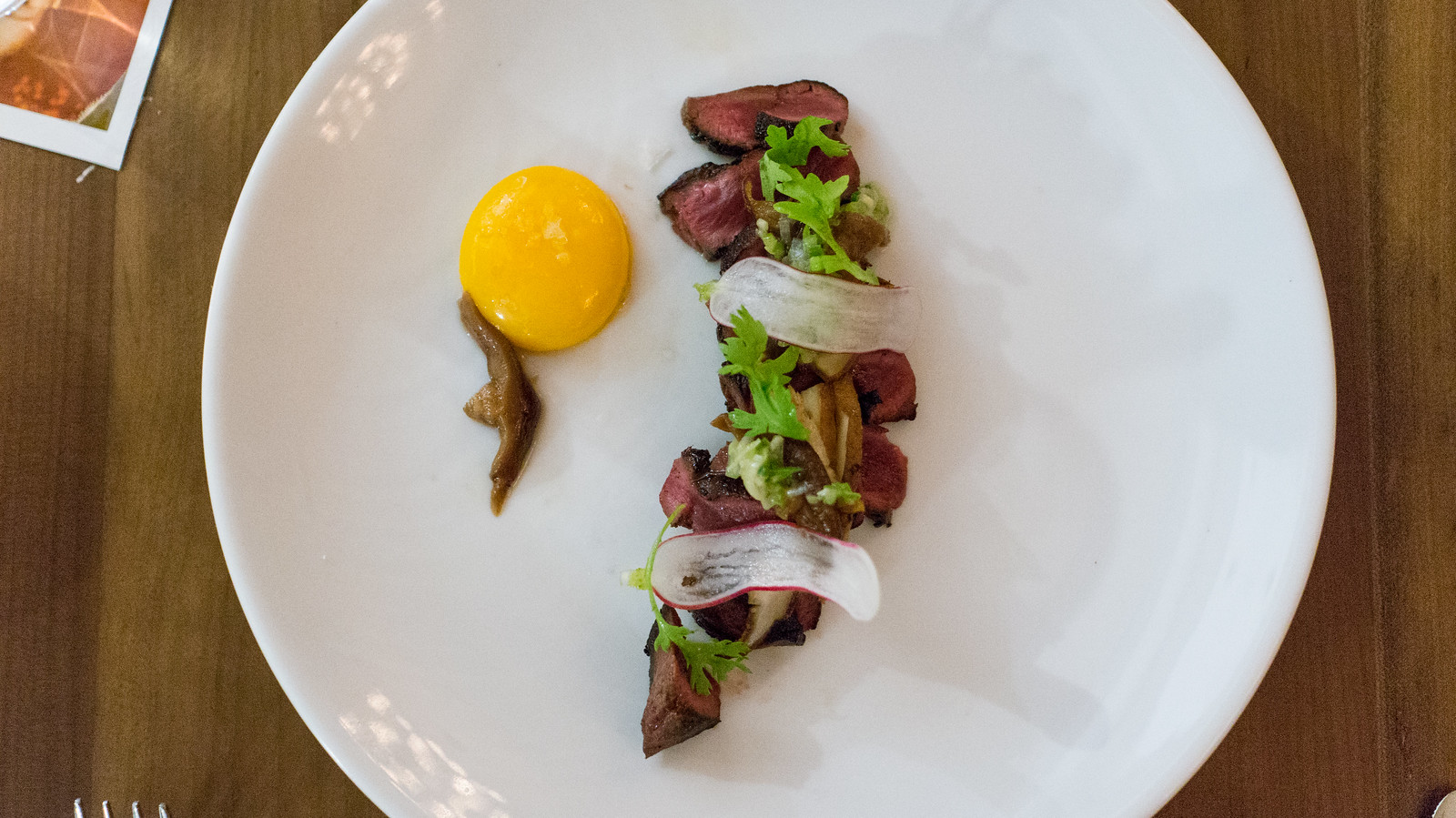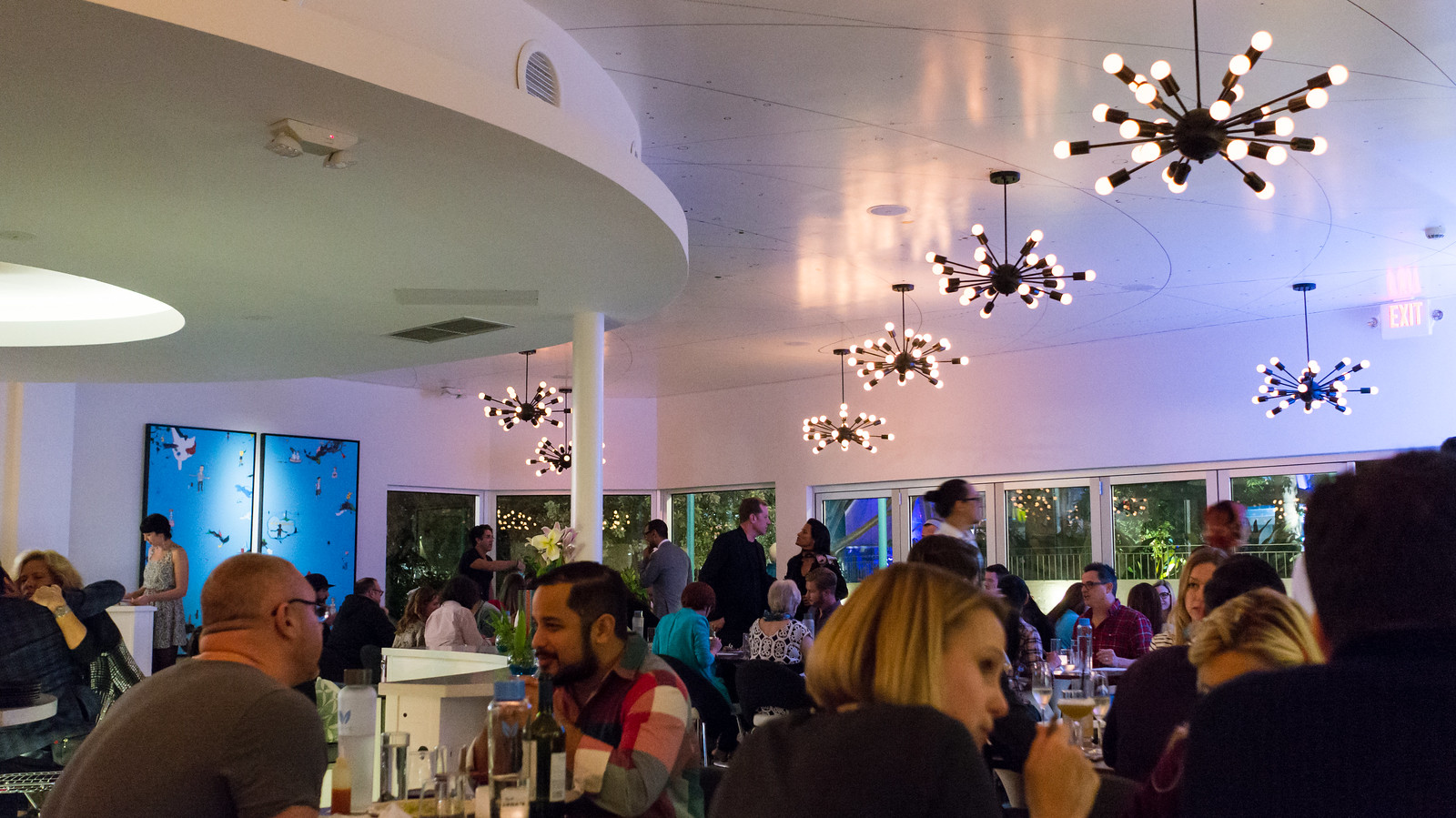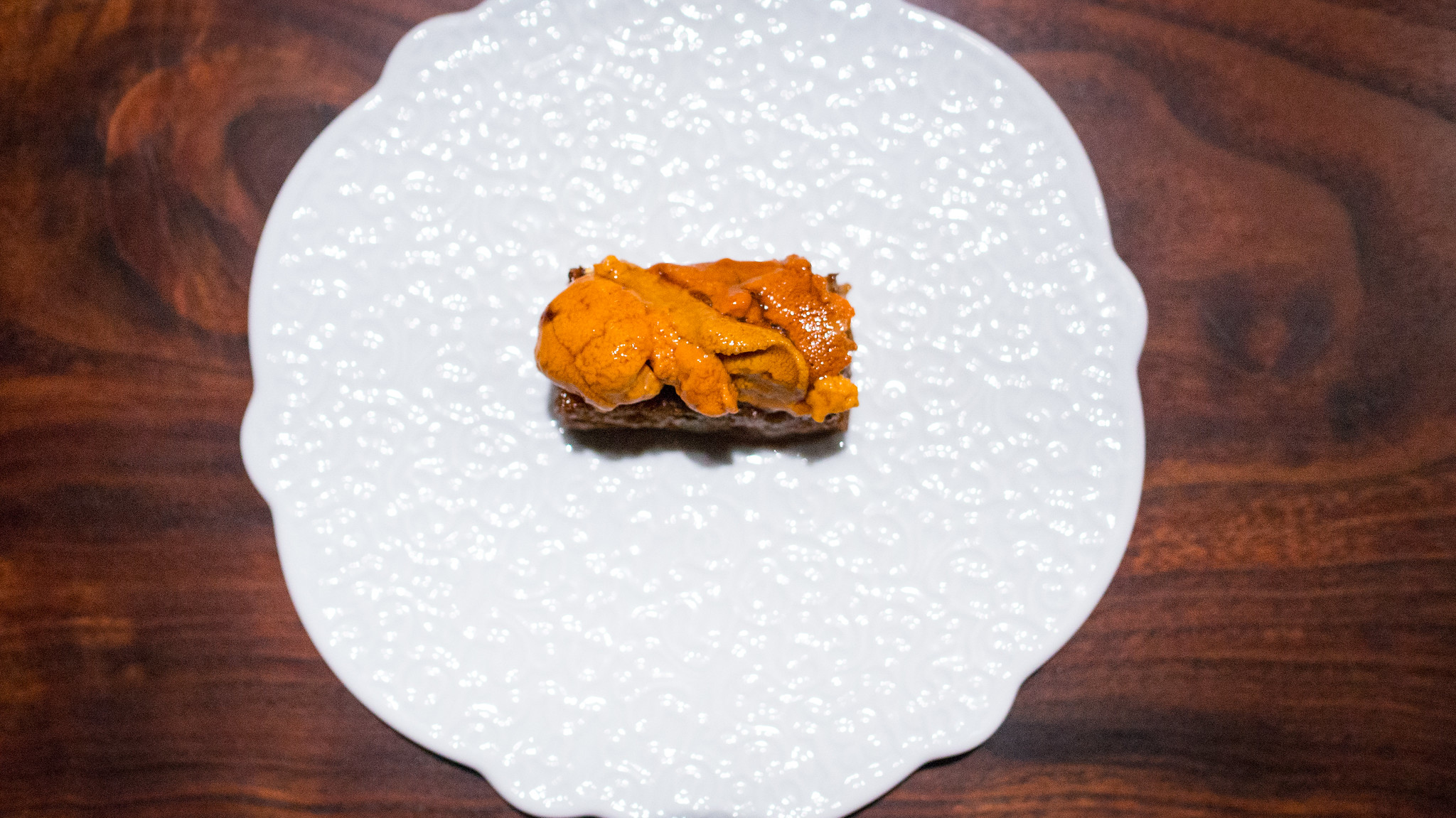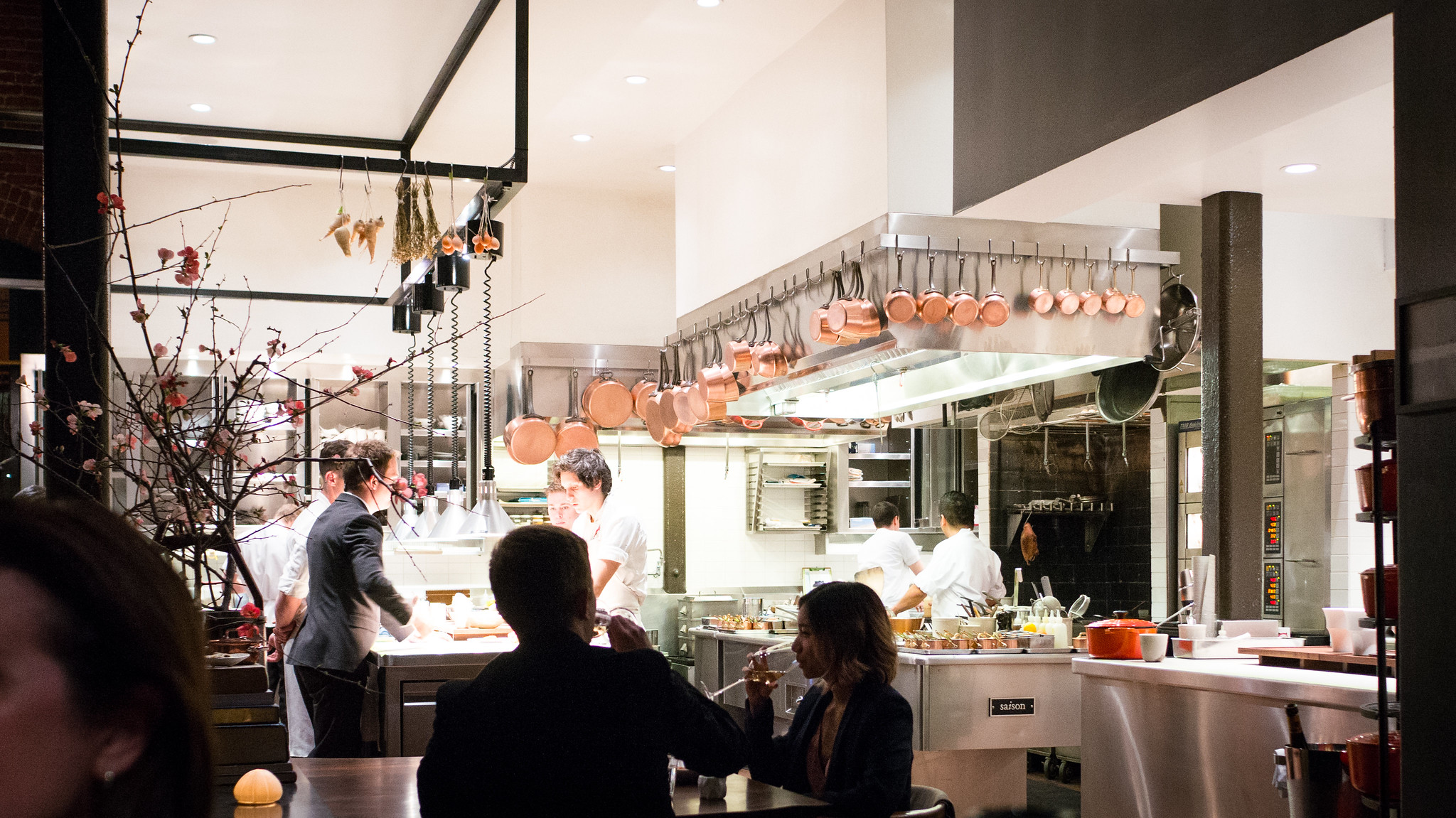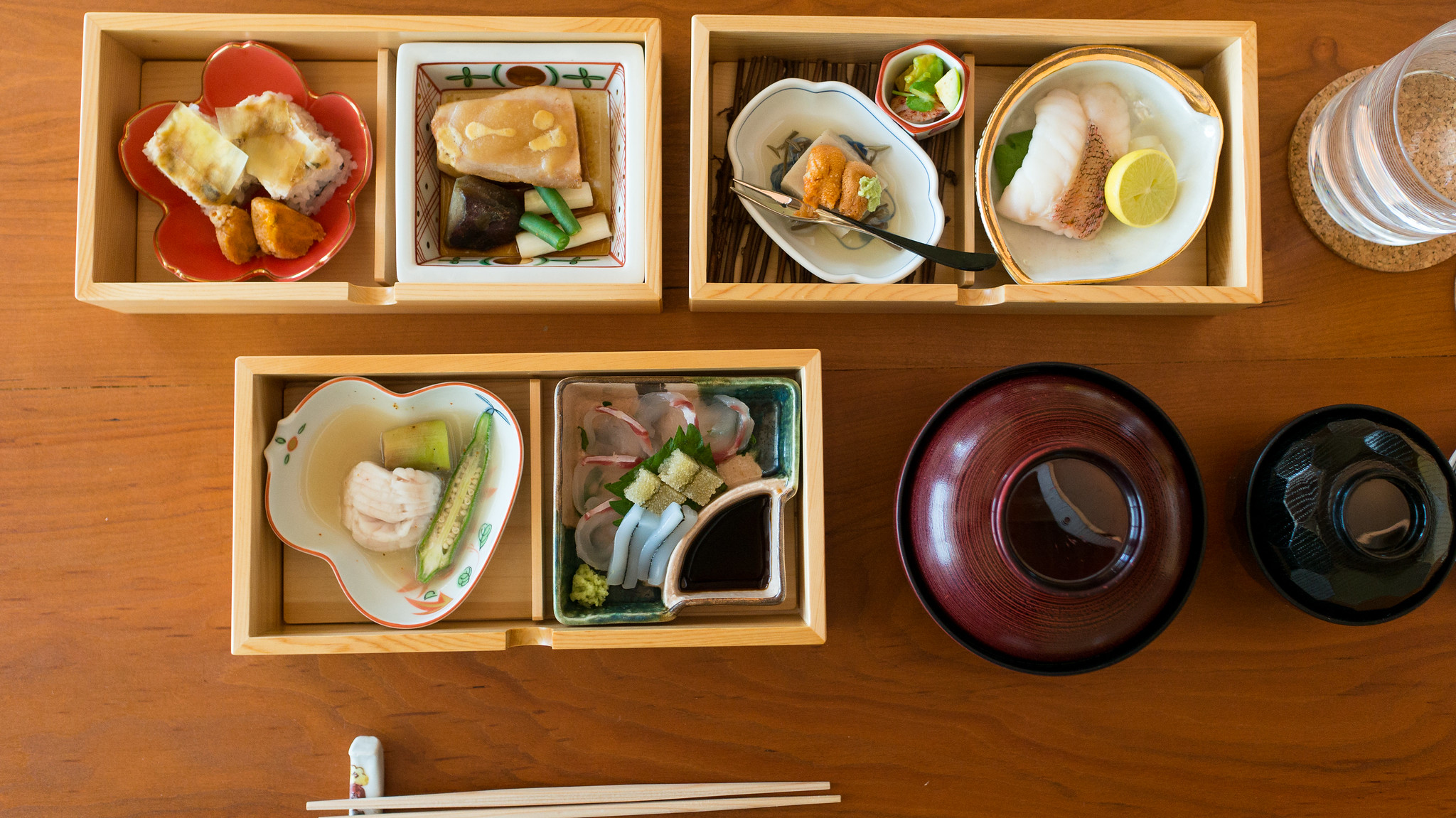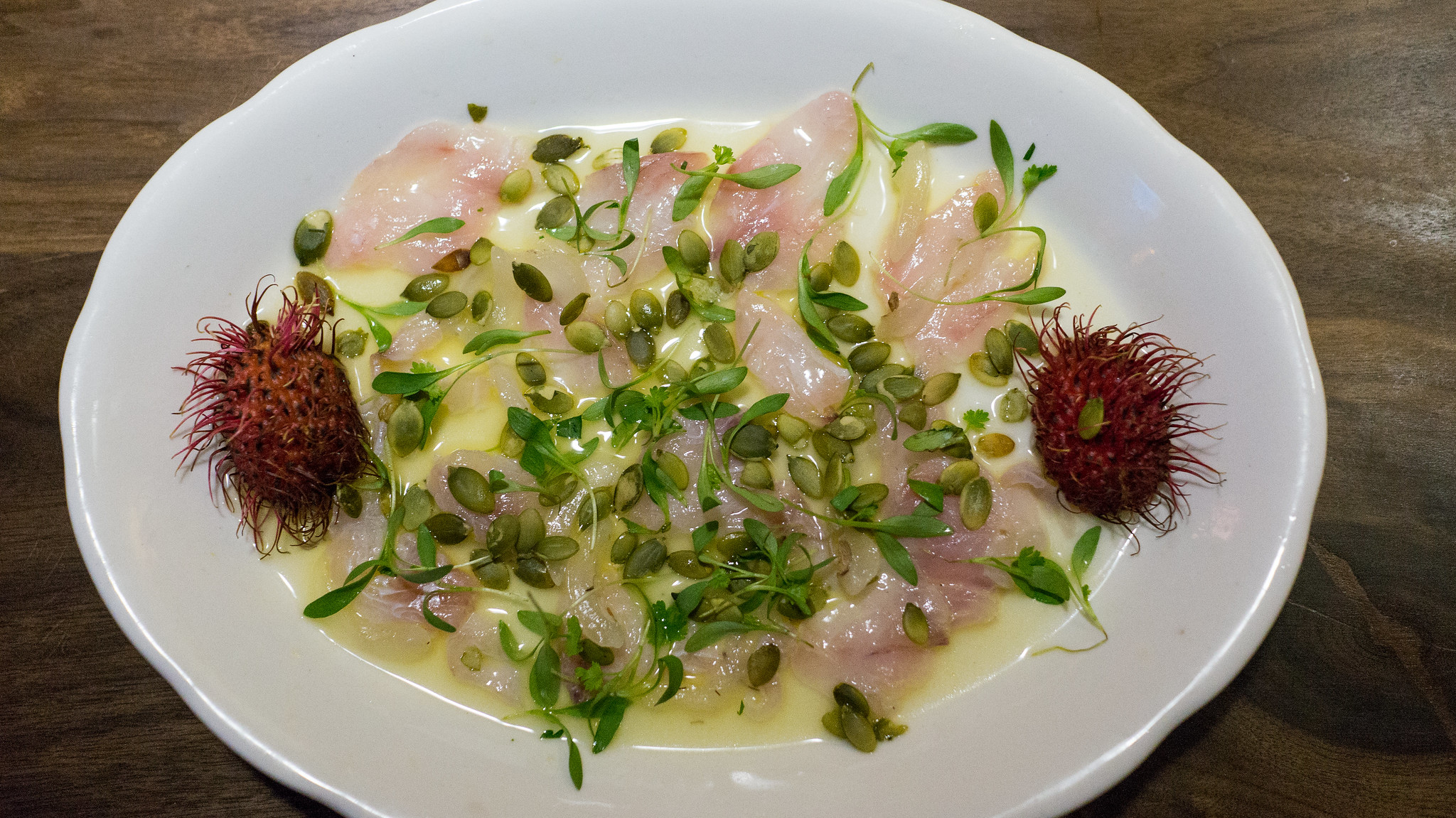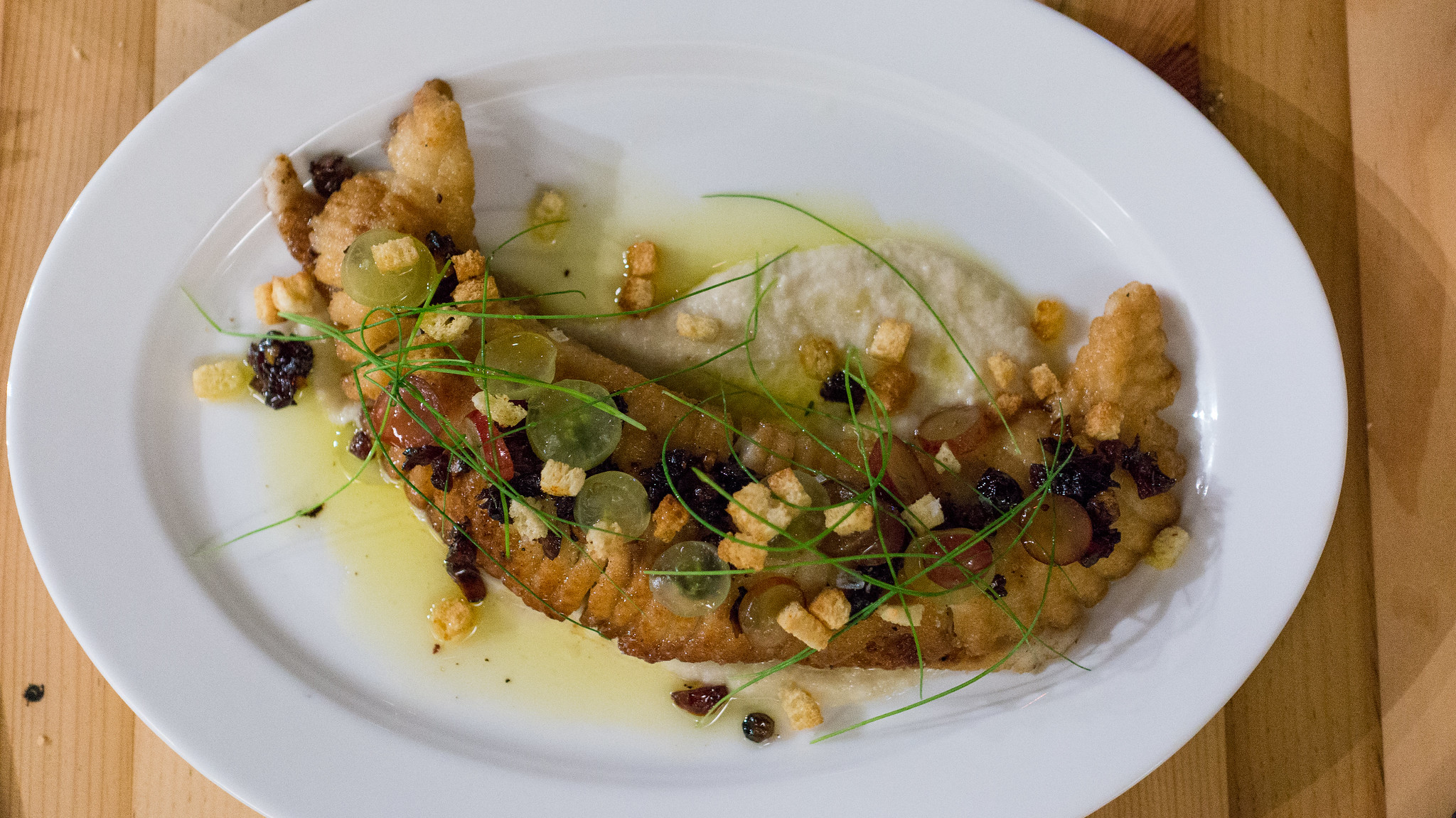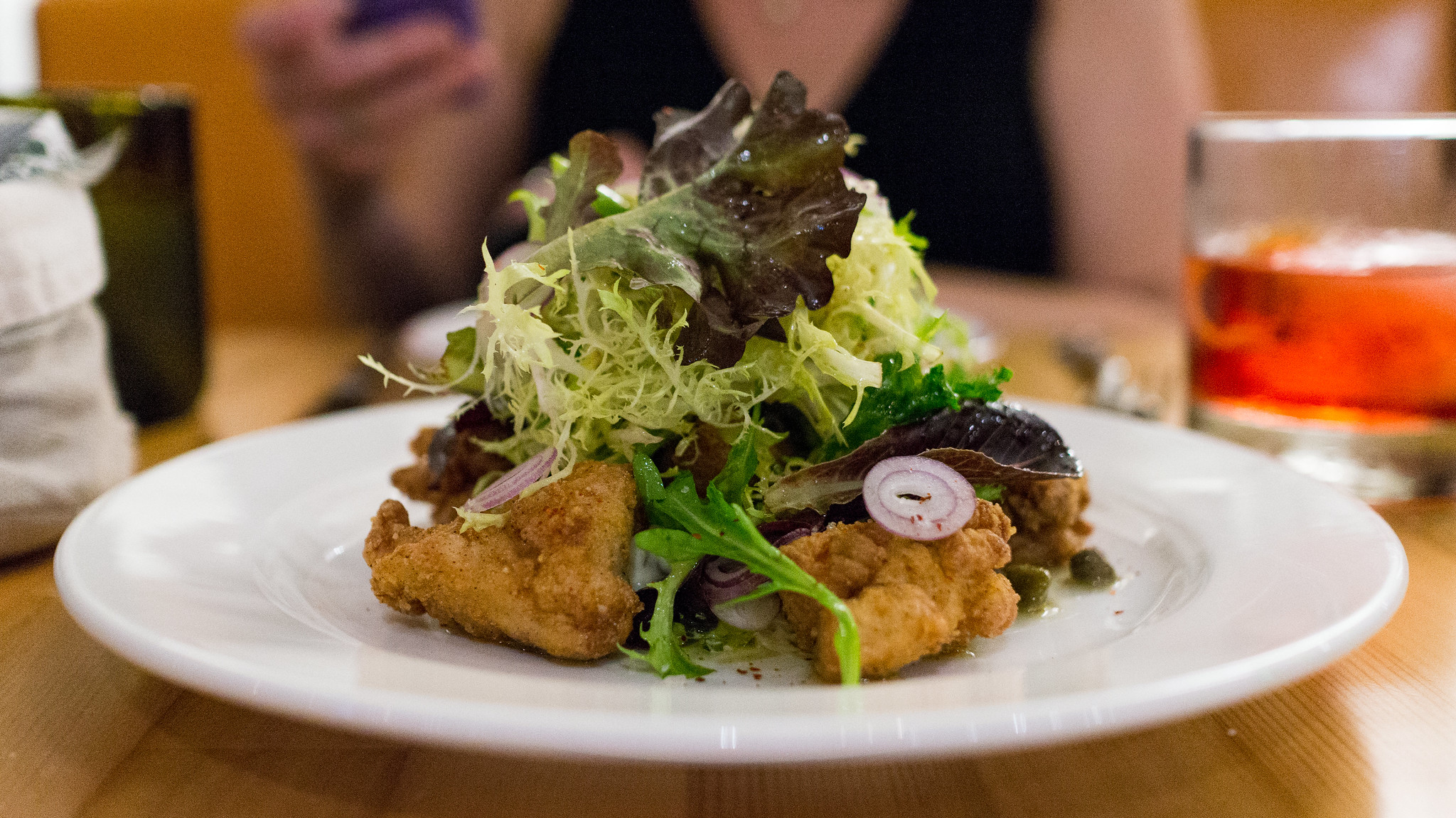Despite getting to do my fair share of traveling, there are still huge swaths of this country I've never seen. With all of the family together over winter break, I aimed to make a small dent in the long list of "Places I Haven't Been" with a week-long, three-city trek that started in Memphis, Tennessee. As always, my pre-trip research resulted in a list of places to visit about five times longer than could possibly be achieved in the time we had. To see the complete list and plot your own adventure, click on this Memphis / Nashville / Louisville google map. Here's where we ate, with a few inedible highlights along the way.
If I knew one thing about Memphis food before this trip, it was dry-rub ribs. And if I knew one place to get them, it was Charles Vergos' Rendezvous, a nearly 70-year old restaurant downtown where you enter through a back alley and head downstairs into the basement. The ribs here are swabbed with a vinegar and spice mop, cooked over hot charcoal, then dusted with a heavy shower of dried spices. Except for a small puddle of the meat's own juices, there's not touched by any sauce, though there are a couple squeeze bottles on the table. These are not your fall-off-the-bone kind of ribs; they've still got some traction, matching the assertive flavors of pork and spice.
It's not your typical barbecue (in fact some might say it's not barbecue at all), and the place has a little bit of a tourist trap feel to it, but I've had plenty worse ribs than these. I was also fond of their slaw, which had a pronounced yellow mustard kick, and am grateful to Allison Riley for counseling me not to miss the simple pleasures of a sausage and cheese appetizer plate.
(You can see all my pictures in this Charles Vergos' Rendezvous flickr set).
Charles Vergos' Rendezvous
52 S. Second Street, Memphis, Tennessee
901.523.2746
Our first night in Memphis found us at The Second Line, a New Orleans inspired restaurant from Chef Kelly English. The Louisiana-born chef first started cooking professionally in New Orleans with culinary godfather John Besh, then made his way to Memphis to open his first spot, Restaurant Iris, in 2009. A few years later he opened The Second Line, a more casual place featuring lots of Big Easy staples, right next door to the fancier Iris.[1]
What better way to start an evening than a sazerac? Followed by some New Orleans-style BBQ shrimp (with a shout-out to English's mentor: "Besh's BBQ Shrimp") and a nice loaf of French bread? All that was missing was, alas, my favorite part: the shrimp's heads. When I'd order these at Mr. B's Bistro in New Orleans or Red Light in Miami, I'd give Mrs. F all the meat and just suck on all the heads.[2]
English's fried gulf oyster poboy, dressed with lettuce tomato mayo and pickles, was as good as any I've had in New Orleans (seen up close in cross-section here), with a hearty sidecar of red beans and rice. And while much of the menu consists of several other varieties of poboys, there's also a good beet and feta shwarma, and even a "reasonably healthy dinner salad" if you had ribs for lunch and don't see a fried oyster sandwich as an exercise in moderation.
For our first night in town, this hit all the right spots.
(You can see all my pictures in this The Second Line flickr set).
The Second Line
2144 Monroe Avenue, Memphis, Tennessee
901.590.2829
Much like eating dry-rub ribs, you can't go to Memphis and not go to Beale Street. This three-block stretch, with a history as an entertainment district stretching back to the 1800's, feels a bit like a low-budget Bourbon Street. It has its share of kitsch, but it also has its share of charm. I couldn't figure out why I was hearing an extra horn line over the recorded music coming from one of the bars until I spied a wandering trumpeter playing as he walked down the sidewalk.[3] And a troupe of street gymnasts used Beale as the stage for an impressively athletic series of flips, culminating in this high air in front of the 140-year old A. Schwab Trading Co. store.
(continued ...)
Showing posts sorted by date for query eating house. Sort by relevance Show all posts
Showing posts sorted by date for query eating house. Sort by relevance Show all posts
Tuesday, January 19, 2016
Tuesday, December 22, 2015
best dishes of 2015: part 3
We're in the home stretch now. Here are the final fifteen of the best things I ate in 2015. Still hungry? Check out part 1 and part 2, and you can also see all the pictures in this Best Dishes of 2015 flickr set. This final group splits time between Miami and Northern California, starting with what was, for me, one of the most unexpectedly exciting – and unfortunately, short-lived – restaurants that opened (and closed) here in 2015.
Once again, despite the title, this makes no claim as being the "best" of anything other than the things I had the good fortune to eat over the past year. There are oodles of intriguing new restaurants just in South Florida that I've not yet made it to, or only started to get to know, much less the broader dining universe out there. These appear in roughly chronological order.
Gordita, Haitian Griots and Pikliz, Cotija, Raw Vegan Verde - Centro Taco (Downtown Miami) (see all my pictures from Centro Taco)
This Mexican-Haitian mash-up was darn near perfect: a crisp, corn-y masa shell filled with tender, burnished-edged fried pork, a tangy, spicy cabbage slaw, a dollop of salsa verde and a sprinkling of cotija cheese. Before my first visit, I was by no means convinced that Miami needed another taco shop. But it can always use more like this. (I guess I was wrong – Centro Taco closed after only a couple months, but Chef Richard Hales is looking to reopen in another spot. I hope that happens soon.)
Cape Canaveral Prawns, Tajin Crust, Grits, Mole Verde, Lime Crema, Huitlacoche - Alter (Wynwood Miami) (read my thoughts and see all my pictures from Alter)
I found another favorite dish on a visit to Alter in August: the tajin-crusted Cape Canaveral prawns, strewn over a bed of creamy corn grits lashed with stripes of mole verde, lime crema, and huitlacoche. It's a beautiful combination – like a next-generation Mexican shrimp 'n' grits – but what really elevates it is the quality of those prawns, tender and juicy underneath their chile and citrus coating, their heads bursting with oceanic goodness when chewed or squeezed.
Caviar, Smoked Oil Poached Egg, Creme Fraiche; Celtuce, Just Dug Potatoes, Comté, Burnt Hay, Tarragon; Musk Melon, Coconut, Lemon Flavors - Coi (San Francisco) (read my thoughts and see all my pictures from Coi)
Here are three dishes from a meal at Daniel Patterson's restaurant Coi, shortly after the chef announced that he would stepping out of the kitchen at the end of the year. He's bringing in a wonderful chef to take over – Matthew Kirkley, who served me a great meal at Chicago's L2O late last year – but I'm glad to have had a chance to experience Patterson's cooking at Coi. From Patterson's book:
Another dish from the Coi "greatest hits" collection. The primary ingredient is celtuce, featured both in thickly sliced discs and thin ribbons of its stalk. It has the hearty snap of a broccoli stem, and a delicately bittersweet flavor somewhere in the neighborhood of lettuce, celery and asparagus. Freshly dug potatoes are cooked until just tender, and crowned with caps of nutty, buttery melted comté cheese. These sit over an oil blackened with powdered burnt hay. Those black and charred aromas are brought back to green and fresh by a few wispy leaves of tarragon. "Coi" is an archaic French word meaning "quiet," and Patterson's cooking voice can be quiet, subtle, understated. Sometimes you have to listen closely. If you do so, in this dish maybe you'll hear something that sounds like a field of grass blown by the wind, with all these variations on the vegetal tastes of the pasture.
Then the next bite soothes. Gorgeously fragrant, sweet cubes of musk melon swim in a soup of their juices, intermingled with lemon flavors (something herbaceous here: lemon verbena?) and topped with a scoop of coconut sorbet. It's simple. And stunning.
(continued ...)
Once again, despite the title, this makes no claim as being the "best" of anything other than the things I had the good fortune to eat over the past year. There are oodles of intriguing new restaurants just in South Florida that I've not yet made it to, or only started to get to know, much less the broader dining universe out there. These appear in roughly chronological order.
Gordita, Haitian Griots and Pikliz, Cotija, Raw Vegan Verde - Centro Taco (Downtown Miami) (see all my pictures from Centro Taco)
This Mexican-Haitian mash-up was darn near perfect: a crisp, corn-y masa shell filled with tender, burnished-edged fried pork, a tangy, spicy cabbage slaw, a dollop of salsa verde and a sprinkling of cotija cheese. Before my first visit, I was by no means convinced that Miami needed another taco shop. But it can always use more like this. (I guess I was wrong – Centro Taco closed after only a couple months, but Chef Richard Hales is looking to reopen in another spot. I hope that happens soon.)
Cape Canaveral Prawns, Tajin Crust, Grits, Mole Verde, Lime Crema, Huitlacoche - Alter (Wynwood Miami) (read my thoughts and see all my pictures from Alter)
I found another favorite dish on a visit to Alter in August: the tajin-crusted Cape Canaveral prawns, strewn over a bed of creamy corn grits lashed with stripes of mole verde, lime crema, and huitlacoche. It's a beautiful combination – like a next-generation Mexican shrimp 'n' grits – but what really elevates it is the quality of those prawns, tender and juicy underneath their chile and citrus coating, their heads bursting with oceanic goodness when chewed or squeezed.
Caviar, Smoked Oil Poached Egg, Creme Fraiche; Celtuce, Just Dug Potatoes, Comté, Burnt Hay, Tarragon; Musk Melon, Coconut, Lemon Flavors - Coi (San Francisco) (read my thoughts and see all my pictures from Coi)
Here are three dishes from a meal at Daniel Patterson's restaurant Coi, shortly after the chef announced that he would stepping out of the kitchen at the end of the year. He's bringing in a wonderful chef to take over – Matthew Kirkley, who served me a great meal at Chicago's L2O late last year – but I'm glad to have had a chance to experience Patterson's cooking at Coi. From Patterson's book:
Coi is part of a well-established tradition of restaurants that serve expensive tasting menus. We are mindful of that history, but there are some aspects of an haute cuisine dining experience that feel more symbolic than heartfelt, like building the menu around a procession of luxury ingredients. Products like truffles and caviar are expensive, but they aren't hard to find or challenging to prepare. They don't carry any particular emotional value for me, just the wan connotation of a bygone era when waiters wore white gloves. Nothing wrong with that, it's just not how I cook.Well, sometimes exceptions can be made. I, for one, would never turn down this mound of caviar, served over a poached egg yolk nestled next to some silky creme fraiche sprinkled with chives. Again there's another little surprise: the gooey yolk has been imbued with the flavor of the smoked oil in which it was poached, the combination of roe and smoke bringing to mind the grill-smoked caviar served by Victor Arguinzoniz at Etxebarri.
Another dish from the Coi "greatest hits" collection. The primary ingredient is celtuce, featured both in thickly sliced discs and thin ribbons of its stalk. It has the hearty snap of a broccoli stem, and a delicately bittersweet flavor somewhere in the neighborhood of lettuce, celery and asparagus. Freshly dug potatoes are cooked until just tender, and crowned with caps of nutty, buttery melted comté cheese. These sit over an oil blackened with powdered burnt hay. Those black and charred aromas are brought back to green and fresh by a few wispy leaves of tarragon. "Coi" is an archaic French word meaning "quiet," and Patterson's cooking voice can be quiet, subtle, understated. Sometimes you have to listen closely. If you do so, in this dish maybe you'll hear something that sounds like a field of grass blown by the wind, with all these variations on the vegetal tastes of the pasture.
Then the next bite soothes. Gorgeously fragrant, sweet cubes of musk melon swim in a soup of their juices, intermingled with lemon flavors (something herbaceous here: lemon verbena?) and topped with a scoop of coconut sorbet. It's simple. And stunning.
(continued ...)
Thursday, December 17, 2015
best dishes of 2015: part 1
With the calendar winding to its end, that means it's list season. Not Santa's list; I'm referring to the annual tradition of "best" lists among food writers. Locally, we already have "2015's Best Dishes" lists from the Miami Herald and Miami New Times, plus "Best New Restaurants" lists from both as well (Herald; New Times). In the larger universe, the New York Times' Pete Wells has his "Top Ten Dishes" and "Top New York Restaurants," Eater has Robert Sietsema's "15 Best Dishes of 2015," The Guardian has an intriguing survey of several chefs' and food writers' "favourite meals this year," and Alex Balk has an – unusual – "Top 5 Memorable Meals" list over at The Awl (#2: "Two cough drops, Hoyt-Schermerhorn stop").
Before we all get full on lists, here's mine. Unrestrained by page limits or editorial discretion, this one goes to 45 (or something around there – we'll see), which is actually down from last year's 60. I must have become more discriminating in the past year. Some of these dishes come from ultra high end tasting menus; others are from simple, bare-bones joints. Geographically, more than half were home-grown here in South Florida, with most of the rest coming from multiple trips to the Bay Area this past year. Yes, the title of the post says "best," but such superlatives are of course meaningless; it's just a list of some personal favorites that stood out over a year of good eating. Here goes Part 1, which starts with a dessert (these appear in roughly chronological order):
Pistachio Cake, Fennel Panna Cotta, Roasted White Chocolate – Vagabond Restaurant (Miami MiMo District) (read my thoughts and see all my pictures from Vagabond)
Vagabond closes strong. The pistachio cake is among the best desserts I've had in Miami. The emerald green cake is pulled apart and crumbled over a fennel panna cotta, then draped with crumbles of roasted white chocolate and ribbons of candied fennel. There are such vivid, bright flavors here, and an interplay of textures that keeps you coming back for another bite. I'm not usually big on desserts, but this was excellent.
Smoked Mullet Dinner – Ted Peters Smoked Fish (St. Petersburg) (read my thoughts and see all my pictures from Ted Peters)
The picture does not quite convey the size of this gorgeous whole split fish, the skin and exposed flesh burnished golden-brown from the smoke, which perfumes but doesn't overwhelm. This, for me, is a happy meal: sitting on a picnic bench, picking sweet, smoky meat away from a fish carcass until all that's left is a pile of bones and a shell of shiny skin. If a whole fish is too fiddly for you, the smoked fish spread is a generous serving for only $7.99 and is served with about a sleeve's worth of Saltines – but you may still want to get a side of that potato salad, liberally punctuated with bits of bacon.
The 4 Selection - Fodder & Shine (Tampa) (read my thoughts and see all my pictures from Fodder & Shine)
Maybe the best of the things we ate at Fodder & Shine were the vegetables, available either as side dishes, or a choice of four to make a meal. Lima beans, cooked down into a thick stew with onions and old sour, had a depth of flavor that belied their homely appearance. Beets roasted with cane syrup highlighted the root's natural sugars without being cloying. Greens braised with bacon were tender, smoky, salty and sweet. And possibly my favorite were the turnips and cabbage braised in butter, giving the humble vegetables a texture like rich velvet. From early reviews, the restaurant is getting a bit of grief for its prices, but the $15 we spent on this vegetable plate may be one of the best dining investments I will make all year.
Cauliflower, Harissa, Iberico Bellota, Roasted Pork Broth - Proof Pizza & Pasta (Wynwood Miami) (read my thoughts and see all my pictures from our Cobaya dinner at Proof)
This course was, for me, unexpectedly one of the best dishes of the night, and one of the most flavorful I've had in recent memory. A couple varieties of cauliflower florets were nestled over a creamy purée and draped with a slice of silky, salty, nutty jamón ibérico de bellota, given a jolt of heat from harissa and an enveloping richness from a dollop of roasted pork broth. I'm a firm believer that vegetable-centric dishes need not be austere (or vegetarian for that matter), and this was a great example.
Carolina Gold Rice Pudding, Honey Tangerine, Pork Skin "Churro" - gastroPod with Husk's Chef Travis Grimes (Wynwood Miami) (see all my pictures from gastroPod 2.0)
The "Charleston Ice Cream" served at Sean Brock's restaurant McCrady's – a simple dish of bay leaf infused Carolina Gold rice, perfectly cooked, garnished with a few fresh greens – was one of the best things I ate in 2012. So I'm not surprised to see this dessert, from that same great grain, from a collaboration between the chef de cuisine at Brock's second Charleston restaurant, Husk, and Chef Jeremiah of the gastroPod, on the list this year. This pudding tasted first of the grain, then of the sweet cream binding it together, with a sweet-tart contrast from honey tangerine segments and an airy, crisp pork skin "churro" to top things off.
(continued ...)
Before we all get full on lists, here's mine. Unrestrained by page limits or editorial discretion, this one goes to 45 (or something around there – we'll see), which is actually down from last year's 60. I must have become more discriminating in the past year. Some of these dishes come from ultra high end tasting menus; others are from simple, bare-bones joints. Geographically, more than half were home-grown here in South Florida, with most of the rest coming from multiple trips to the Bay Area this past year. Yes, the title of the post says "best," but such superlatives are of course meaningless; it's just a list of some personal favorites that stood out over a year of good eating. Here goes Part 1, which starts with a dessert (these appear in roughly chronological order):
Pistachio Cake, Fennel Panna Cotta, Roasted White Chocolate – Vagabond Restaurant (Miami MiMo District) (read my thoughts and see all my pictures from Vagabond)
Vagabond closes strong. The pistachio cake is among the best desserts I've had in Miami. The emerald green cake is pulled apart and crumbled over a fennel panna cotta, then draped with crumbles of roasted white chocolate and ribbons of candied fennel. There are such vivid, bright flavors here, and an interplay of textures that keeps you coming back for another bite. I'm not usually big on desserts, but this was excellent.
Smoked Mullet Dinner – Ted Peters Smoked Fish (St. Petersburg) (read my thoughts and see all my pictures from Ted Peters)
The picture does not quite convey the size of this gorgeous whole split fish, the skin and exposed flesh burnished golden-brown from the smoke, which perfumes but doesn't overwhelm. This, for me, is a happy meal: sitting on a picnic bench, picking sweet, smoky meat away from a fish carcass until all that's left is a pile of bones and a shell of shiny skin. If a whole fish is too fiddly for you, the smoked fish spread is a generous serving for only $7.99 and is served with about a sleeve's worth of Saltines – but you may still want to get a side of that potato salad, liberally punctuated with bits of bacon.
The 4 Selection - Fodder & Shine (Tampa) (read my thoughts and see all my pictures from Fodder & Shine)
Maybe the best of the things we ate at Fodder & Shine were the vegetables, available either as side dishes, or a choice of four to make a meal. Lima beans, cooked down into a thick stew with onions and old sour, had a depth of flavor that belied their homely appearance. Beets roasted with cane syrup highlighted the root's natural sugars without being cloying. Greens braised with bacon were tender, smoky, salty and sweet. And possibly my favorite were the turnips and cabbage braised in butter, giving the humble vegetables a texture like rich velvet. From early reviews, the restaurant is getting a bit of grief for its prices, but the $15 we spent on this vegetable plate may be one of the best dining investments I will make all year.
Cauliflower, Harissa, Iberico Bellota, Roasted Pork Broth - Proof Pizza & Pasta (Wynwood Miami) (read my thoughts and see all my pictures from our Cobaya dinner at Proof)
This course was, for me, unexpectedly one of the best dishes of the night, and one of the most flavorful I've had in recent memory. A couple varieties of cauliflower florets were nestled over a creamy purée and draped with a slice of silky, salty, nutty jamón ibérico de bellota, given a jolt of heat from harissa and an enveloping richness from a dollop of roasted pork broth. I'm a firm believer that vegetable-centric dishes need not be austere (or vegetarian for that matter), and this was a great example.
Carolina Gold Rice Pudding, Honey Tangerine, Pork Skin "Churro" - gastroPod with Husk's Chef Travis Grimes (Wynwood Miami) (see all my pictures from gastroPod 2.0)
The "Charleston Ice Cream" served at Sean Brock's restaurant McCrady's – a simple dish of bay leaf infused Carolina Gold rice, perfectly cooked, garnished with a few fresh greens – was one of the best things I ate in 2012. So I'm not surprised to see this dessert, from that same great grain, from a collaboration between the chef de cuisine at Brock's second Charleston restaurant, Husk, and Chef Jeremiah of the gastroPod, on the list this year. This pudding tasted first of the grain, then of the sweet cream binding it together, with a sweet-tart contrast from honey tangerine segments and an airy, crisp pork skin "churro" to top things off.
(continued ...)
Friday, November 27, 2015
best thing i ate last week: pork braised in milk at Eating House
As I groggily arise, still digesting last night's Thanksgiving feast (while simultaneously plotting what to do with the leftovers), it occurs to me that I'm still a week behind on "best thing i ate last week." So let's catch up.
Sometimes for no good reason, restaurants fall off your radar screen. That had happened to me with Eating House. Though I've always had good meals there, somehow more than a year had passed without a visit. I've been back in twice in the past couple months, and it's been better than ever. The old "standards" are still around – the tomatoes with coconut ice, the chicken and "foiffles" – but much is new as well, including roughly half the menu now being taken over by vegetable-centered dishes.
(You can see all my pictures from the restaurant in this Eating House 2.0 flickr set).
Many of these have been very good, like the burnt cabbage with fried garlic and egg vinaigrette, and the red wine risotto with bitter radicchio, pistachios and dried black olives. But the star of my last visit was a pork dish.
The starting point is maiale al latte: pork braised in milk, an old school Italian dish that is about as traif as you can get, which yields fork-tender meat in a rich brown sauce of pork juices and fat emulsified in reduced milk that is almost like a porcine dulce de leche. But then chef Giorgio Rapicavoli does a few things his nonna wouldn't do. He adds crumbles of raw cauliflower, which sounds odd but works, the squeaky texture and fresh, vegetal flavor providing some contrast against all that richness. He adds meaty seared mushrooms and petals of charred onion, upping the umami quotient. He sprinkles it with charred vegetable ash, an intensified iteration of the caramelization that produces the sauce.
(continued ...)
Thursday, October 29, 2015
calendar highlights: Taco & Tequila Showdown 11.8.15; P.I.G 11.15.15
You may already know that in addition to the infrequent restaurant reviews, Food For Thought also features "The Calendar" – a list of upcoming dining events that may be of interest to food-minded people. Here are a couple highlights coming up soon on the calendar:
Taco & Tequila Showdown at the Vagabond on Monday November 8 (6pm-9pm). Presented by MIAbites and The Liquid Projects, the event will pair 12 chefs creating signature tacos with 12 bartenders creating signature tequila cocktails. If you don't get into the Cobaya dinner that night, this might be a good Plan B: about half the chef participants are Cobaya alumni. Tickets ($65) available at Eventbrite.
P.I.G. 6 in Wynwood on Sunday, November 15 (3pm-7pm). This shindig in celebration of the pig, orchestrated by Chef Jeremiah Bullfrog of the gastroPod, is always one of my favorites every year. Participants this year include Kyle Foster of Denver's Colt & Gray (and before that, my beloved Talula), Craig Deihl of Charleston's Cypress, plus locals Giorgio Rapicavoli of Eating House, Steve Santana of Taquiza, Todd Erickson of Haven and HuaHua's, Roel Alcudia (formerly Cypress Room), Brian Mullins of Ms. Cheezious, Aaron Brooks of Edge, Brad Kilgore of Alter, James Strine of Café Boulud, and Mike Pirolo of Macchialina and Bazi. Tickets ($50) available through Tock.
By the way: these types of events always get put on the FFT calendar but are usually not the subject of a post – I've tried to use blog posts only for actual content. But if you, dear reader, find these type of posts useful (or conversely, annoying), please speak up. Thanks.
Taco & Tequila Showdown at the Vagabond on Monday November 8 (6pm-9pm). Presented by MIAbites and The Liquid Projects, the event will pair 12 chefs creating signature tacos with 12 bartenders creating signature tequila cocktails. If you don't get into the Cobaya dinner that night, this might be a good Plan B: about half the chef participants are Cobaya alumni. Tickets ($65) available at Eventbrite.
P.I.G. 6 in Wynwood on Sunday, November 15 (3pm-7pm). This shindig in celebration of the pig, orchestrated by Chef Jeremiah Bullfrog of the gastroPod, is always one of my favorites every year. Participants this year include Kyle Foster of Denver's Colt & Gray (and before that, my beloved Talula), Craig Deihl of Charleston's Cypress, plus locals Giorgio Rapicavoli of Eating House, Steve Santana of Taquiza, Todd Erickson of Haven and HuaHua's, Roel Alcudia (formerly Cypress Room), Brian Mullins of Ms. Cheezious, Aaron Brooks of Edge, Brad Kilgore of Alter, James Strine of Café Boulud, and Mike Pirolo of Macchialina and Bazi. Tickets ($50) available through Tock.
By the way: these types of events always get put on the FFT calendar but are usually not the subject of a post – I've tried to use blog posts only for actual content. But if you, dear reader, find these type of posts useful (or conversely, annoying), please speak up. Thanks.
Thursday, October 1, 2015
best thing i ate last week: grilled carrots with aged gouda and buckwheat at Eating House
Somehow, I had let a year go by since my last visit to Eating House, Giorgio Rapicavoli's pop-up gone permanent on the northern edge of Coral Gables. That was dumb of me. This past weekend I grabbed a solo spot at the bar after both wife and daughter had abandoned me for the evening, and sampled as much as I could of the current menu. Some staples remain: the tomatoes with coconut ice and Vietnamese flavors, the chicken and "foi-ffles," the over-the-top pasta carbonara. But everything else around the edges is new – and very good.
Vegetable-focused dishes in particular are a strong suit, and of these, my favorite was a plate of grilled carrots, blanketed in soft curls of a powerfully rich five-year aged gouda cheese (it gets crystals like a good aged parmigiano-reggiano), dappled with crunchy buckwheat kernels, all resting atop a pillow of a creamy carrot-top pesto. I especially liked that the carrots were not annihilated, but maintained a not-quite-raw but still firm core – so you get both clean, vegetal snap and dark, sweet roasty caramel flavors. It was the best thing I ate last week.
Runners-up: the blistered shishito peppers showered with cured egg yolk and dry olive at Eating House; the flaky malawach bread (a Yemenite specialty) served with spicy hariff, grated tomatoes, feta cheese and hard boiled egg for brunch at 27 Restaurant (especially good when accompanied by a Miso Honey Cold Brew).
Wednesday, August 5, 2015
Alter - Miami (Wynwood)
About four years ago I came across a blog called "The Power of a Passion." It was the product of a young chef who had recently moved to Miami after working in Chicago – first a brief tour of duty at Alinea, then a year and a half at L2O during chef Laurent Gras' tenure, followed by a stint as pastry sous chef at Boka, then a move to executive sous chef at Epic. He'd come here to take a position as sous chef at Azul restaurant, where Chef Joel Huff had recently been put in place as executive chef.
The author was Bradley Kilgore. And it may have been those blog posts as much as anything that prompted our interest in doing a Cobaya dinner at Azul – one which ended up being filmed by Andrew Zimmern and featured in an episode of Bizarre Foods. Anyone who was at that dinner – which included at least one course that was Brad's creation – could sense that Kilgore had some real talent.[1]
Several months later we made a return visit to Azul; Huff was gone and the kitchen was now in the hands of Kilgore and chef de cuisine Jacob Anaya. We gave Brad free reign and he put together a sensational meal. His "anatomy of a suckling pig" remains one of the most epic pork-fests I've ever experienced.
Shortly after, Kilgore got an opportunity to run his own spot, and opened Exit 1 in Key Biscayne. But for a lot of reasons that didn't work out. The location was far from ideal, the owners were not exactly veteran operators,[2] and while Brad could cook, he may have been a bit inexperienced himself in all of the other components involved in running a restaurant. That didn't last long, but a better opportunity rolled around when he took over the chef de cuisine position at J&G Grill in Bal Harbour. Here was an established high-end restaurant in the empire of one of the most successful restaurateurs in the world (Jean-Georges Vongerichten), with the bonus of getting to team up with one of Miami's brightest stars: pastry chef Antonio Bachour. Sure, Brad was mostly executing Jean-Georges' best hits, but he also got a little bit of leash to do his own thing too, including some really exceptional on-request tasting menus.
So I was a bit surprised when last November, after a little more than a year at J&G, Kilgore announced that he was leaving to open his own restaurant. As talented as I knew him to be, I'll confess I was concerned that it was too soon. The last thing I wanted – for him, and frankly, for myself as someone who really enjoyed eating his food – was another exit like Exit 1.
I was wrong. He was ready. And his new restaurant – Alter, in Wynwood, which opened in late May – is already one of the best restaurants in Miami.[3]
(You can see all my pictures in this Alter - Miami (Wynwood) flickr set; pictured at top, a pre-dessert of assorted local tropical fruits in a crisp candy shell, served on an inverted woven palm frond basket).
The space, in the burgeoning Wynwood arts district,[4] has a minimalist, industrial feel: the cinder block walls are bare, the ductwork is exposed, the primary decoration is an abstract squiggle of hot pink neon hanging over the liquor shelf that separates the open kitchen from the dining room. The dark-stained wood tables seat about forty, with a small extra seating area outside if the temperatures ever drop. The room can get too warm when it's crowded and too loud when the music's cranked up, both of which are frequent occurrences.
The menu is nearly as spare as the decor. There are usually about eight appetizers and a comparable number of main courses; a five-course tasting menu ($65) is composed from the kitchen's choice of several of those items, some in shrunken-down portions, and is both a solid value and a particularly smart option for a first visit.
Lots of places have fish tartare on their menus these days. Nobody has one like this. Multi-hued batons of green mango and various radishes form a haystack on top of precisely diced fish, the exact species of which is dictated by whatever is local and fresh. There are celery leaves,[5] there's dried soy, there's yuzu kosho, there's black lime zested over the top. It's simultaneously spicy, citrusy, smoky, green, and fresh, as the flavors ping-pong between suggestions of a Thai pok-pok salad and a Peruvian ceviche and other things entirely.
A "signature dish" can be both blessing and curse. It helps define a style – and bring customers in – but can also be a sort of trap, something that can never come off the menu. Alter's soft egg may be its signature dish, and I'm sure it's much too early for Brad to be worried about golden handcuffs.[6] A fluffy, brûléed scallop mousse, bearing just a subtle whiff of the ocean (turn up the volume with an optional dollop of Florida caviar), blankets a runny-yolked, soft-cooked egg hidden within. Also suspended underneath the surface are truffle pearls and a crackly shard of gruyere cheese, like those crusty bits on the side of the bowl that are maybe the best thing about French onion soup.
As signatures go, this is a fitting one for the cooking at Alter. The dish – like much of Brad's work – is a deftly executed balancing act between delicate subtlety and outright indulgence, earth and ocean, creamy and rich without being heavy and cloying. It also displays another thing I see often in Brad's cooking: the incorporation of dessert techniques into savory dishes, what with the mousse and the brûlée, inverting the past decade's trend of incorporating savory elements into desserts. Pro tip: if you're getting the egg, you really also need to get the "bread & beurre," a tender-crumbed miniature loaf crusted with sumac and dill seed, and served with whipped, shoyu-bolstered "umami butter." The bread is delicious on its own, but as a tool for getting every last bit of the egg, it is particularly effective.
Summer squash is often among the most nebbish of vegetables. Not here. Zucchini and yellow squashes are cooked just enough to temper their bitter, raw edge, but not so much as to turn watery and slimy. A green circle of an herbaceous, dill-infused purée serves as the base for their arrangement, which is interspersed with dabs of tart, creamy lemon curd.[7] Crumbles of soft feta cheese, a touch of citron vinaigrette, a tangle of crisp, fresh greens and some crunchy puffed wild rice complete the dish. It works a magical transformation on the squash, like a sexy librarian taking off her glasses and letting down her hair.
(continued ...)
Tuesday, July 28, 2015
a weekend of eating (and other things) in Chicago
The idea was to break up the long hot summer by spending the weekend someplace cooler than Miami. Of course, our visit to Chicago coincided with a heatwave that brought 90 degree temperatures right along with us. So that part didn't go as planned.
My last brief visit to Chicago focused mostly on high-end dining – Alinea (pictures here) and the now-closed L2O (pictures here), though I also managed to squeeze into a seat at Au Cheval (pictures here) and snag one of their awesome burgers. But this trip was planned on fairly short notice, too late to book seats at a couple other places high on my to-do list: Grace and 42 Grams in particular.
So the question was, where to go in Chicago where we could book a table on about a week's notice?[1] I aimed a bit lower and made reservations at a couple newer additions to Chicago's dining constellation – Salero and Momotaro – as well as a place I've been hoping to try for a couple years, Trenchermen.
Other than the weather, it all worked out pretty well. Here's a brief travelogue of where we went and what we did.
Our very first stop was at the Broken Shaker (see all my Broken Shaker pics here), a newly opened Chicago outpost of Miami's craft cocktail bar in the Freehand Hotel. I may have brought the Miami weather with me, but the Bar Lab boys, Elad Zvi and Gabriel Orta, seem to have brought all the rest of the Magic City to the Windy City.[2] They've done an uncanny job of capturing the look and feel of the original bar in the old 1930's era Miami Beach Indian Creek Hotel. They get the drinks right too, with some Miami staples (Cocoa Puff Old Fashioned) mixed in with some Chicago-inspired cocktails. A Devonshire Fizz, with Rare Tea blood orange scented green tea, Campari, grapefruit soda, vermouth and Milagro tequila, took the edge off a steamy Chicago afternoon. We even ran into Elad at the bar, a day before he headed to New Orleans for Tales of the Cocktail and picked up a well-deserved award for Best American Hotel Bar for Shaker Miami.
Broken Shaker Chicago
19 East Ohio Street, Chicago, Illinois 312.940.3699
From there, we headed to dinner at Salero (see all my Salero pics here), a Spanish restaurant which opened about a year ago in the West Loop, which is becoming Chicago's restaurant row. The chef is Ashlee Aubin, an alumnus of (now-closed) Zealous and Alinea who also runs the kitchen at Wood. At Salero, Aubin mixes old and new, with lots of Basque influences in particular on display.
Though Spanish often means tapas, Salero's menu eschews the now-ubiquitous "small plates" format for more traditional appetizers ("entradas") and entrées ("platos fuertes"). Still, there is also a bar menu of pintxos (the Basque tapas equivalent) which, if you ask nicely, you can also avail yourself of in the dining room. It was from there that we ordered a couple "Gildas," a simple and wonderful pintxo of anchovies, manzanilla olives and guindilla peppers found throughout San Sebastian and Bilbao.[3] Also from the pintxos menu, a sampling of Spain's outstanding "conservas," or canned seafood products: berberechos (cockles), served simply with bread, butter and lemon, and still tasting like they were straight from the sea.
A variation on calçots looked to the Catalan instead of the Basque country for inspiration; the brick-red, mildly spicy romesco sauce was right on target, but the grilled spring onions were all crispy greens and none of the tender, sweet whites that are the highlight of the traditional dish.[4] A rabbit terrine looked somewhat sloppy and disheveled, but I would have ordered anything that came with the excellent cheese-stuffed, tempura-fried padron peppers that accompanied it. And I loved Salero's modernized version of callos a la madrileña, which was the Best Thing I Ate Last Week (last week).
Salero
621 W. Randolph Street, Chicago, Illinois 312.466.1000

The following morning we headed up to Lincoln Park, where the Green City Market hosts a Saturday farmers market. We grabbed a pint of some Michigan berries from Mick Klug Farm and a buttermilk doughnut from the Doughnut Vault truck parked along the street and had our breakfast on a park bench.
Just down the street is the Chicago History Museum, which had a fantastic exhibit of photos by Vivian Maier, a nanny for several Chicago families who in her spare time took pictures all around the city during the 1950's through 1970's. This was really a stunning exhibit with an odd backstory. Maier apparently didn't show her photographs to anyone during her lifetime, and at some point in her life, a storage locker with thousands of negatives was auctioned off after being seized by a landlord. In 2007 the negatives were discovered in a thrift auction house and finally made their way to the public eye.[5]
We wound up back in the West Loop for lunch, and after poking our noses into Stephanie Izard's Little Goat Diner (one hour wait) and Au Cheval (three hour wait!), I grabbed a sandwich at Cemitas Puebla instead. I'd never had a proper cemita before and my expectations were high – perhaps too high. I went with the milanesa, and it was a good, satisfying $8 lunch, but nothing that changed my life in any meaningful way. Nice crispy, juicy pork loin, on a nice puffy, crusty-shelled roll, but it had too much cheese, not enough avocado, and barely a whisper of any chipotle sauce. I doctored it with the tableside salsas, but it wasn't enough to make any magic.
Cemitas Puebla
817 West Fulton Market, Chicago, Illinois 312.455.9200

For dinner, we headed over to Wicker Park, past the teeming hordes filling the outdoor patio and stuffing their faces with tacos at Big Star, and around the corner to the somewhat more sedate Trenchermen (see all my Trenchermen pictures here). The entrance looks like a Victorian scientist's cabinet of curiosities, with terrariums mounted on the wall and shelves stuffed with odd knick-knacks. Down a half-flight of stairs, you'll find yourself in the lengthy bar, which occupies a space that used to be a Russian bathhouse and still feels a bit like it, with white subway tiles lining the walls of the subterranean space. The dining room occupies a parallel room dominated by huge octagonal lights that look like they were poached from a Frank Lloyd Wright project.
The food, from Chef Pat Sheerin,[6] is equally eccentric, often referencing multiple cuisines at once, even on the same plate. Notwithstanding the heartiness suggested by the restaurant's name, most dishes tread pretty lightly. The menu is divided into sections for cold and warm starters and then mains, but a four-course prix fixe option lets you choose two starters, a main and a dessert, which is about the right amount of food.
Salt and pepper squid, served over a salad of cubed eggplant and cucumber with spicy chiles, felt Asian and Middle Eastern at the time, sichuan peppercorn bringing that tingly "ma la" sensation, cumin vinaigrette adding that warm B.O. funk. That may not be the most appetizing description, but it was a delicious dish. A plate of grilled carrots paired with English pea falafel balls and an orange and olive oil "jam" also tasted like it had blown through the Mediterranean on its way to the table. A salad of kale and pickled escabeche vegetables napped with an avocado goddess dressing and sprinkled with toasted pumpkin seeds felt appropriately virtuous.
If Trenchermen has a signature dish, it may be the "pickle tots" – a mash-up of tater tots and fried pickles, served with a hot pink yogurt infused with dehydrated red onion, and ribbons of cured and smoked chicken "bresaola" (you can watch the Sheerin brothers prepare the dish here). I can see why they'd have trouble taking it off the menu – it's a great dish, simultaneously contemporary and nostalgic.
While you can go meaty at Trenchermen, with a double burger, beef shoulder, or leg of lamb, it's also a vegetarian-friendly place, with not one but two plant-based main course options. Wanting to eat light, we tried both. I preferred the toasted oats with mapo tofu, the tofu dusted with powdered chiles in a bowl rounded out with lentils, eggplant and toasted almonds. The roasted broccoli, with vadouvan spice, sprouted black chickpeas, a broccoli and hemp seed hummus and hoisin sauce, was not as good, the broccoli a bit woody and tough, the spicing a bit too mild-mannered. But the dessert – a Basque cake, served over an almond crumble and a smear of lemon curd, and crowned with a scoop of olive oil poppy seed ice cream – more than made up for it. I don't usually get that excited over cake, but this one, crusty on the outside and custardy within, was exciting stuff.
Trenchermen
2039 W. North Avenue, Chicago, Illinois 773.661.1540

(continued ...)
My last brief visit to Chicago focused mostly on high-end dining – Alinea (pictures here) and the now-closed L2O (pictures here), though I also managed to squeeze into a seat at Au Cheval (pictures here) and snag one of their awesome burgers. But this trip was planned on fairly short notice, too late to book seats at a couple other places high on my to-do list: Grace and 42 Grams in particular.
So the question was, where to go in Chicago where we could book a table on about a week's notice?[1] I aimed a bit lower and made reservations at a couple newer additions to Chicago's dining constellation – Salero and Momotaro – as well as a place I've been hoping to try for a couple years, Trenchermen.
Other than the weather, it all worked out pretty well. Here's a brief travelogue of where we went and what we did.
Our very first stop was at the Broken Shaker (see all my Broken Shaker pics here), a newly opened Chicago outpost of Miami's craft cocktail bar in the Freehand Hotel. I may have brought the Miami weather with me, but the Bar Lab boys, Elad Zvi and Gabriel Orta, seem to have brought all the rest of the Magic City to the Windy City.[2] They've done an uncanny job of capturing the look and feel of the original bar in the old 1930's era Miami Beach Indian Creek Hotel. They get the drinks right too, with some Miami staples (Cocoa Puff Old Fashioned) mixed in with some Chicago-inspired cocktails. A Devonshire Fizz, with Rare Tea blood orange scented green tea, Campari, grapefruit soda, vermouth and Milagro tequila, took the edge off a steamy Chicago afternoon. We even ran into Elad at the bar, a day before he headed to New Orleans for Tales of the Cocktail and picked up a well-deserved award for Best American Hotel Bar for Shaker Miami.
Broken Shaker Chicago
19 East Ohio Street, Chicago, Illinois 312.940.3699
From there, we headed to dinner at Salero (see all my Salero pics here), a Spanish restaurant which opened about a year ago in the West Loop, which is becoming Chicago's restaurant row. The chef is Ashlee Aubin, an alumnus of (now-closed) Zealous and Alinea who also runs the kitchen at Wood. At Salero, Aubin mixes old and new, with lots of Basque influences in particular on display.
Though Spanish often means tapas, Salero's menu eschews the now-ubiquitous "small plates" format for more traditional appetizers ("entradas") and entrées ("platos fuertes"). Still, there is also a bar menu of pintxos (the Basque tapas equivalent) which, if you ask nicely, you can also avail yourself of in the dining room. It was from there that we ordered a couple "Gildas," a simple and wonderful pintxo of anchovies, manzanilla olives and guindilla peppers found throughout San Sebastian and Bilbao.[3] Also from the pintxos menu, a sampling of Spain's outstanding "conservas," or canned seafood products: berberechos (cockles), served simply with bread, butter and lemon, and still tasting like they were straight from the sea.
A variation on calçots looked to the Catalan instead of the Basque country for inspiration; the brick-red, mildly spicy romesco sauce was right on target, but the grilled spring onions were all crispy greens and none of the tender, sweet whites that are the highlight of the traditional dish.[4] A rabbit terrine looked somewhat sloppy and disheveled, but I would have ordered anything that came with the excellent cheese-stuffed, tempura-fried padron peppers that accompanied it. And I loved Salero's modernized version of callos a la madrileña, which was the Best Thing I Ate Last Week (last week).
Salero
621 W. Randolph Street, Chicago, Illinois 312.466.1000
The following morning we headed up to Lincoln Park, where the Green City Market hosts a Saturday farmers market. We grabbed a pint of some Michigan berries from Mick Klug Farm and a buttermilk doughnut from the Doughnut Vault truck parked along the street and had our breakfast on a park bench.
Just down the street is the Chicago History Museum, which had a fantastic exhibit of photos by Vivian Maier, a nanny for several Chicago families who in her spare time took pictures all around the city during the 1950's through 1970's. This was really a stunning exhibit with an odd backstory. Maier apparently didn't show her photographs to anyone during her lifetime, and at some point in her life, a storage locker with thousands of negatives was auctioned off after being seized by a landlord. In 2007 the negatives were discovered in a thrift auction house and finally made their way to the public eye.[5]
We wound up back in the West Loop for lunch, and after poking our noses into Stephanie Izard's Little Goat Diner (one hour wait) and Au Cheval (three hour wait!), I grabbed a sandwich at Cemitas Puebla instead. I'd never had a proper cemita before and my expectations were high – perhaps too high. I went with the milanesa, and it was a good, satisfying $8 lunch, but nothing that changed my life in any meaningful way. Nice crispy, juicy pork loin, on a nice puffy, crusty-shelled roll, but it had too much cheese, not enough avocado, and barely a whisper of any chipotle sauce. I doctored it with the tableside salsas, but it wasn't enough to make any magic.
Cemitas Puebla
817 West Fulton Market, Chicago, Illinois 312.455.9200
For dinner, we headed over to Wicker Park, past the teeming hordes filling the outdoor patio and stuffing their faces with tacos at Big Star, and around the corner to the somewhat more sedate Trenchermen (see all my Trenchermen pictures here). The entrance looks like a Victorian scientist's cabinet of curiosities, with terrariums mounted on the wall and shelves stuffed with odd knick-knacks. Down a half-flight of stairs, you'll find yourself in the lengthy bar, which occupies a space that used to be a Russian bathhouse and still feels a bit like it, with white subway tiles lining the walls of the subterranean space. The dining room occupies a parallel room dominated by huge octagonal lights that look like they were poached from a Frank Lloyd Wright project.
The food, from Chef Pat Sheerin,[6] is equally eccentric, often referencing multiple cuisines at once, even on the same plate. Notwithstanding the heartiness suggested by the restaurant's name, most dishes tread pretty lightly. The menu is divided into sections for cold and warm starters and then mains, but a four-course prix fixe option lets you choose two starters, a main and a dessert, which is about the right amount of food.
Salt and pepper squid, served over a salad of cubed eggplant and cucumber with spicy chiles, felt Asian and Middle Eastern at the time, sichuan peppercorn bringing that tingly "ma la" sensation, cumin vinaigrette adding that warm B.O. funk. That may not be the most appetizing description, but it was a delicious dish. A plate of grilled carrots paired with English pea falafel balls and an orange and olive oil "jam" also tasted like it had blown through the Mediterranean on its way to the table. A salad of kale and pickled escabeche vegetables napped with an avocado goddess dressing and sprinkled with toasted pumpkin seeds felt appropriately virtuous.
If Trenchermen has a signature dish, it may be the "pickle tots" – a mash-up of tater tots and fried pickles, served with a hot pink yogurt infused with dehydrated red onion, and ribbons of cured and smoked chicken "bresaola" (you can watch the Sheerin brothers prepare the dish here). I can see why they'd have trouble taking it off the menu – it's a great dish, simultaneously contemporary and nostalgic.
While you can go meaty at Trenchermen, with a double burger, beef shoulder, or leg of lamb, it's also a vegetarian-friendly place, with not one but two plant-based main course options. Wanting to eat light, we tried both. I preferred the toasted oats with mapo tofu, the tofu dusted with powdered chiles in a bowl rounded out with lentils, eggplant and toasted almonds. The roasted broccoli, with vadouvan spice, sprouted black chickpeas, a broccoli and hemp seed hummus and hoisin sauce, was not as good, the broccoli a bit woody and tough, the spicing a bit too mild-mannered. But the dessert – a Basque cake, served over an almond crumble and a smear of lemon curd, and crowned with a scoop of olive oil poppy seed ice cream – more than made up for it. I don't usually get that excited over cake, but this one, crusty on the outside and custardy within, was exciting stuff.
Trenchermen
2039 W. North Avenue, Chicago, Illinois 773.661.1540
(continued ...)
Friday, July 3, 2015
Quality Cobaya with Chef Patrick Rebholz
The scent – well, let's be more blunt – ripe, animal funk of cured meats as we entered the room was a good sign. It soon became apparent from whence it came: a spread of charcuterie laid on top of butcher paper that stretched all the way down a table set for forty guests.
We were in a private second-floor room in the old Bancroft Hotel on South Beach, a beautiful property whose Art Deco features have been pretty respectfully preserved. It's now the home of the Miami outpost of Quality Meats, a New York restaurant with some historical legacy itself: its owners opened the original Smith & Wollensky steakhouse in New York in 1977.[1]
The chef was Patrick Rebholz. Before joining QM, Rebholz had spent most of the past decade cooking in Charleston, most recently as the chef de cuisine at the Peninsula Grill. We got a hint that Chef Rebholz had big plans for his Cobaya dinner when he asked for an early start time. Sure enough, we didn't wrap up until nearly four hours after our 6:30pm commencement. It was time very happily spent.
(You can see all my pictures from the dinner in this Quality Cobaya flickr set).
After milling around at the bar while our group assembled, we were escorted upstairs to the "Bancroft Room" and its wafting meaty aromas. Moscow Mules in gleaming copper mugs were handed out to everyone. All the chairs were pushed back from the table so that Rebholz and crew could more easily make their way through to apply some finishing touches: cornbread cream on top of the smoked soppressata; aerated mozzarella on top of the coppa.
There was plenty more: silky, intense cured foie gras torchon coated with malted barley and a mango gastrique; thin-sliced suckling pig coppa di testa and hearty headcheese; merguez "prosciutto" topped with preserved lemon; creamy calf liver mousse topped with pickled ramps; pork jowl pastrami; hickory smoked duck bacon; toasty pork jowl corn dogs with Tabasco mayo; popcorn dressed in dry-aged beef fat. Rebholz poured some of his house-brewed beer too, and it was a great match with the charcuterie.[2]
It was a crazy good way to start a meal, and folks dug in pretty rapaciously. Then Chef Rebholz just rolled the paper down to clear the table.[3]
(continued ...)
We were in a private second-floor room in the old Bancroft Hotel on South Beach, a beautiful property whose Art Deco features have been pretty respectfully preserved. It's now the home of the Miami outpost of Quality Meats, a New York restaurant with some historical legacy itself: its owners opened the original Smith & Wollensky steakhouse in New York in 1977.[1]
The chef was Patrick Rebholz. Before joining QM, Rebholz had spent most of the past decade cooking in Charleston, most recently as the chef de cuisine at the Peninsula Grill. We got a hint that Chef Rebholz had big plans for his Cobaya dinner when he asked for an early start time. Sure enough, we didn't wrap up until nearly four hours after our 6:30pm commencement. It was time very happily spent.
(You can see all my pictures from the dinner in this Quality Cobaya flickr set).
After milling around at the bar while our group assembled, we were escorted upstairs to the "Bancroft Room" and its wafting meaty aromas. Moscow Mules in gleaming copper mugs were handed out to everyone. All the chairs were pushed back from the table so that Rebholz and crew could more easily make their way through to apply some finishing touches: cornbread cream on top of the smoked soppressata; aerated mozzarella on top of the coppa.
There was plenty more: silky, intense cured foie gras torchon coated with malted barley and a mango gastrique; thin-sliced suckling pig coppa di testa and hearty headcheese; merguez "prosciutto" topped with preserved lemon; creamy calf liver mousse topped with pickled ramps; pork jowl pastrami; hickory smoked duck bacon; toasty pork jowl corn dogs with Tabasco mayo; popcorn dressed in dry-aged beef fat. Rebholz poured some of his house-brewed beer too, and it was a great match with the charcuterie.[2]
It was a crazy good way to start a meal, and folks dug in pretty rapaciously. Then Chef Rebholz just rolled the paper down to clear the table.[3]
(continued ...)
Monday, March 23, 2015
Vagabond Restaurant - Miami MiMo District
When chefs from other cities open restaurants in Miami, there's often a sort of "I'm going to show you how it's done" swagger that locals can find off-putting. You hear lots of broad brush "Miami doesn't have ____" and "Miami doesn't do _____" statements from people who sometimes have spent less than a week here. That limited experience doesn't keep them from professing to educate us all about ourselves and what we're missing.
I was worried we were getting more of the same when I read a pre-opening interview with Alex Chang, the young chef[1] selected to run the Vagabond Restaurant & Bar inside the newly renovated and restored Vagabond Hotel on Biscayne Boulevard.[2] Here's the brash newcomer telling us, "So ... it's different compared to other big cities... I think the food here is not quite as progressive and innovative. I think there's some great chefs here and a lot of people doing some really great stuff, but I think what I found is that there's something missing in the middle to me." And "I just don't think there are restaurants that are super unique here .. like, oh this restaurant bleeds Miami."
At least it was balanced by some humility too: "I'm just trying to really, really figure out what Miami is made of and what it can be..." So I was willing to cut the guy some slack. And if I'm going to be completely honest, though I may not completely agree with the categorical statements, there's an element of truth to what he says.[3] But more important, I wanted to try the guy's food. Let's see what you've got.
(You can see all my pictures in this Vagabond Restaurant flickr set).
There's a "DINER" sign outside the Vagabond Restaurant, keeping with the 1950's era style that's been so faithfully restored throughout the property, and the atmosphere inside is delightfully Jetsons-inspired, staying just this side of kitschy. But Chang's food is decidedly contemporary. Consistent with the "Vagabond" name, inspiration is pulled from all over the map: you'll taste flavors from Mexico, Japan, Italy, Cuba, Thailand, Jamaica, Spain and more – including South Florida. It was interesting to hear from my CSA farmer, Muriel Olivares of Little River Cooperative, that Vagabond has become one of their best customers, and is always interested in the more unusual items they're able to provide. That was a good sign.
(continued ...)
I was worried we were getting more of the same when I read a pre-opening interview with Alex Chang, the young chef[1] selected to run the Vagabond Restaurant & Bar inside the newly renovated and restored Vagabond Hotel on Biscayne Boulevard.[2] Here's the brash newcomer telling us, "So ... it's different compared to other big cities... I think the food here is not quite as progressive and innovative. I think there's some great chefs here and a lot of people doing some really great stuff, but I think what I found is that there's something missing in the middle to me." And "I just don't think there are restaurants that are super unique here .. like, oh this restaurant bleeds Miami."
At least it was balanced by some humility too: "I'm just trying to really, really figure out what Miami is made of and what it can be..." So I was willing to cut the guy some slack. And if I'm going to be completely honest, though I may not completely agree with the categorical statements, there's an element of truth to what he says.[3] But more important, I wanted to try the guy's food. Let's see what you've got.
(You can see all my pictures in this Vagabond Restaurant flickr set).
There's a "DINER" sign outside the Vagabond Restaurant, keeping with the 1950's era style that's been so faithfully restored throughout the property, and the atmosphere inside is delightfully Jetsons-inspired, staying just this side of kitschy. But Chang's food is decidedly contemporary. Consistent with the "Vagabond" name, inspiration is pulled from all over the map: you'll taste flavors from Mexico, Japan, Italy, Cuba, Thailand, Jamaica, Spain and more – including South Florida. It was interesting to hear from my CSA farmer, Muriel Olivares of Little River Cooperative, that Vagabond has become one of their best customers, and is always interested in the more unusual items they're able to provide. That was a good sign.
(continued ...)
Tuesday, March 10, 2015
Saison - San Francisco
There are few meals I've looked forward to with as much anticipation. Between the reports from trusted friends both virtual and flesh and blood, the three Michelin stars conferred late last year (which many thought were overdue), and myriad other raves and recognitions, my expectations for Saison were quite high.
Some reputations are so lofty that I fear the reality cannot possibly compare. But Saison did not disappoint.
Ingredients. Focus. Smoke. Pleasure.
These are the words that keep coming to mind as I look back on our meal.
Ingredients: With a menu that uses primarily seafood and vegetables, prepared in a minimalist style, every item that makes it to the plate has been selected with fanatical attention and care. Many are sourced from nearby: sea urchin from Fort Bragg, seaweeds from Mendocino, vegetables from the restaurant's own farm plot, milk "from our cow."
Focus: Instead of dozens of components thrown together, Saison's dishes have a unity of purpose: nearly every course is about one thing, how to bring out, concentrate, and enhance its flavor. Vegetables are cooked in their own juices, fish are served with sauces infused with their grilled bones, all with the goal of honing and focusing the flavor of the primary ingredient.
Smoke: Almost every dish here is kissed with smoke or fire: grilled over open flame, cooked in the wood-fired hearth, preserved in the smoke that makes its way up the hearth's chimney. This is not just some Luddite counter-reaction to the last decade's increasing focus on kitchen technology. Rather, it's a rediscovery that ancient ways of cooking have powerful ways of highlighting, punctuating, amplifying flavor and texture.
Pleasure: Maybe it's just because these are things that I really like to eat, but Saison's menu feels like it is designed to coddle rather than confront. No doubt, a tremendous amount of thought has gone into the preparation of the dishes; but it doesn't require a lot of thinking to enjoy them.This is not a meal whose purpose is to show you how clever the chef, Joshua Skenes, is. Rather, it's about how much pleasure the diner will take in his work.
(You can see all my pictures in this Saison - San Francisco flickr set).
The pleasure principle kicks in from the moment you enter Saison. There's something delightfully unstuffy about the restaurant. Yes, it's an elegant, beautiful space, filled with live edge wood tables and ornate flower displays; many of the seats are arranged to provide a vantage on a kitchen filled with more gleaming copper than a Mauviel warehouse.[1] But there's also something about it that's very welcoming and even homey: the foyer area is framed by a woodpile, around the corner of which is a cozy little bar where you can start with a cocktail before your meal; that open kitchen feels not so much like a stage with cooks performing for an audience, and more like the open floor plan of a (very rich) friend's loft apartment.
After a pause at the bar, dinner begins with a sort of tea service: an infusion of "some herbs from our garden." Bound with twine, the herbs release a heady aroma as they are dropped into the hot water. The Japanese aesthetic sets the tone for the meal. It's a remarkable thing: there's no dish in particular that is overtly Japanese, but the overall impression is uncannily reminiscent of our meals there last year.[2]
(continued ...)
Some reputations are so lofty that I fear the reality cannot possibly compare. But Saison did not disappoint.
Ingredients. Focus. Smoke. Pleasure.
These are the words that keep coming to mind as I look back on our meal.
Ingredients: With a menu that uses primarily seafood and vegetables, prepared in a minimalist style, every item that makes it to the plate has been selected with fanatical attention and care. Many are sourced from nearby: sea urchin from Fort Bragg, seaweeds from Mendocino, vegetables from the restaurant's own farm plot, milk "from our cow."
Focus: Instead of dozens of components thrown together, Saison's dishes have a unity of purpose: nearly every course is about one thing, how to bring out, concentrate, and enhance its flavor. Vegetables are cooked in their own juices, fish are served with sauces infused with their grilled bones, all with the goal of honing and focusing the flavor of the primary ingredient.
Smoke: Almost every dish here is kissed with smoke or fire: grilled over open flame, cooked in the wood-fired hearth, preserved in the smoke that makes its way up the hearth's chimney. This is not just some Luddite counter-reaction to the last decade's increasing focus on kitchen technology. Rather, it's a rediscovery that ancient ways of cooking have powerful ways of highlighting, punctuating, amplifying flavor and texture.
Pleasure: Maybe it's just because these are things that I really like to eat, but Saison's menu feels like it is designed to coddle rather than confront. No doubt, a tremendous amount of thought has gone into the preparation of the dishes; but it doesn't require a lot of thinking to enjoy them.This is not a meal whose purpose is to show you how clever the chef, Joshua Skenes, is. Rather, it's about how much pleasure the diner will take in his work.
(You can see all my pictures in this Saison - San Francisco flickr set).
The pleasure principle kicks in from the moment you enter Saison. There's something delightfully unstuffy about the restaurant. Yes, it's an elegant, beautiful space, filled with live edge wood tables and ornate flower displays; many of the seats are arranged to provide a vantage on a kitchen filled with more gleaming copper than a Mauviel warehouse.[1] But there's also something about it that's very welcoming and even homey: the foyer area is framed by a woodpile, around the corner of which is a cozy little bar where you can start with a cocktail before your meal; that open kitchen feels not so much like a stage with cooks performing for an audience, and more like the open floor plan of a (very rich) friend's loft apartment.
After a pause at the bar, dinner begins with a sort of tea service: an infusion of "some herbs from our garden." Bound with twine, the herbs release a heady aroma as they are dropped into the hot water. The Japanese aesthetic sets the tone for the meal. It's a remarkable thing: there's no dish in particular that is overtly Japanese, but the overall impression is uncannily reminiscent of our meals there last year.[2]
(continued ...)
Tuesday, December 30, 2014
Best Dishes of 2014 - Part 3
We're in the home stretch. Here is Part 3 of my favorite dishes of the past year. This last set includes several more welcome additions to the Miami dining universe: N by Naoe, Oolite, L'Echon Brasserie, Mignonette, Proof, Seagrape, plus dishes from chefs Diego Oka, Danny Grant and Brad Kilgore. There's also a few items from visits to the Northeast (Toronto, Boston, Maine and Quebec) and a couple great meals in Chicago a couple months ago. In case you missed it: Part 1 and Part 2. You can also see all the pictures in this Best Dishes of 2014 flickr set.
Bento Box – N by Naoe (Brickell Key, Miami) (read my thoughts and see all my pictures from N by Naoe)
A few minutes after you're seated, a three-tiered bento box is brought to your table. It's unpacked to reveal six compartments, each stocked with several different items – similar in style and quality to the elaborate bento that starts a meal at Naoe.
So what's inside? This day: a battera roll of madai (sea bream) and pickled kombu with fried canistel (a/k/a eggfruit); tender braised pork jowl with mustard and miso, with boniato, white asparagus and local green beans; house-made jackfruit seed tofu topped with Hokkaido uni, with junsai (a/k/a water shield, a sort of slippery aquatic plant); a bit of Maine lobster with avocado and pea shoots; grilled black-bellied rosefish (a local deepwater fish in the scorpionfish family) with key lime; the same fish in a different preparation, simmered, with roasted eggplant and okra; sashimi of snowy grouper with komochi kombu (herring roe that have been laid on seaweed) and delightfully sticky aori ika (big fin squid) pressed with nori. Also, in typical Japanese fashion, a rice bowl (studded with bamboo shoots), pickles (eggplant and kombu), and soup (corn miso with slivers of daikon radish and leek).
Snapper Crudo – Oolite (Miami Beach) (see all my pictures from Oolite)
I was crushed when Kris Wessel closed his beloved Red Light a few years ago. He wrote a beautiful menu for Florida Cookery in the James Hotel, but didn't stay long in the kitchen. Then this summer he resurfaced at Oolite, a new spot off Lincoln Road with a pronounced focus on healthy eating. There are still some old Red Light classics – Wessel's fantastic New Orleans style BBQ shrimp, and his smoked, guanabana glazed ribs – and some great new things too.
One of my favorites in the latter category is Oolite's snapper crudo: lean, sweet pinkish-white slivers of local fish, bathed in ginger-infused citrus juices, and garnished with floral, sweet lychees or rambutans and chewy green pumpkin seeds.
Raie a la Grenoblaise, Cervelles de Veau Meuniere – L'Echon Brasserie (Miami Beach) (read my thoughts and see all my pictures from L'Echon)
You can go old-school [at L'Echon]: there are seafood platters, pâté de campagne, steak tartare, moules and frites. Or you can find things more unconventional: hamachi crudo with black garlic soy, crushed tomatoes and olives, pan-roasted veal brains with brown butter and blue crab tartar sauce, a tartine topped with foie gras and nutella. There's also plenty in between, like this skate wing a la grenobloise, prepared with brown butter, capers, slivered grapes, and dried cranberries over a celeriac puree.
(continued ...)
Bento Box – N by Naoe (Brickell Key, Miami) (read my thoughts and see all my pictures from N by Naoe)
A few minutes after you're seated, a three-tiered bento box is brought to your table. It's unpacked to reveal six compartments, each stocked with several different items – similar in style and quality to the elaborate bento that starts a meal at Naoe.
So what's inside? This day: a battera roll of madai (sea bream) and pickled kombu with fried canistel (a/k/a eggfruit); tender braised pork jowl with mustard and miso, with boniato, white asparagus and local green beans; house-made jackfruit seed tofu topped with Hokkaido uni, with junsai (a/k/a water shield, a sort of slippery aquatic plant); a bit of Maine lobster with avocado and pea shoots; grilled black-bellied rosefish (a local deepwater fish in the scorpionfish family) with key lime; the same fish in a different preparation, simmered, with roasted eggplant and okra; sashimi of snowy grouper with komochi kombu (herring roe that have been laid on seaweed) and delightfully sticky aori ika (big fin squid) pressed with nori. Also, in typical Japanese fashion, a rice bowl (studded with bamboo shoots), pickles (eggplant and kombu), and soup (corn miso with slivers of daikon radish and leek).
Snapper Crudo – Oolite (Miami Beach) (see all my pictures from Oolite)
I was crushed when Kris Wessel closed his beloved Red Light a few years ago. He wrote a beautiful menu for Florida Cookery in the James Hotel, but didn't stay long in the kitchen. Then this summer he resurfaced at Oolite, a new spot off Lincoln Road with a pronounced focus on healthy eating. There are still some old Red Light classics – Wessel's fantastic New Orleans style BBQ shrimp, and his smoked, guanabana glazed ribs – and some great new things too.
One of my favorites in the latter category is Oolite's snapper crudo: lean, sweet pinkish-white slivers of local fish, bathed in ginger-infused citrus juices, and garnished with floral, sweet lychees or rambutans and chewy green pumpkin seeds.
Raie a la Grenoblaise, Cervelles de Veau Meuniere – L'Echon Brasserie (Miami Beach) (read my thoughts and see all my pictures from L'Echon)
You can go old-school [at L'Echon]: there are seafood platters, pâté de campagne, steak tartare, moules and frites. Or you can find things more unconventional: hamachi crudo with black garlic soy, crushed tomatoes and olives, pan-roasted veal brains with brown butter and blue crab tartar sauce, a tartine topped with foie gras and nutella. There's also plenty in between, like this skate wing a la grenobloise, prepared with brown butter, capers, slivered grapes, and dried cranberries over a celeriac puree.
(continued ...)
Subscribe to:
Posts (Atom)


